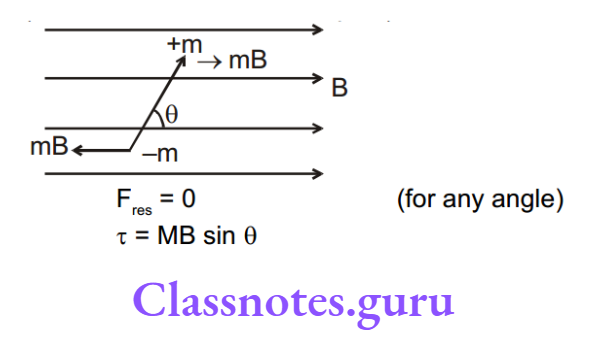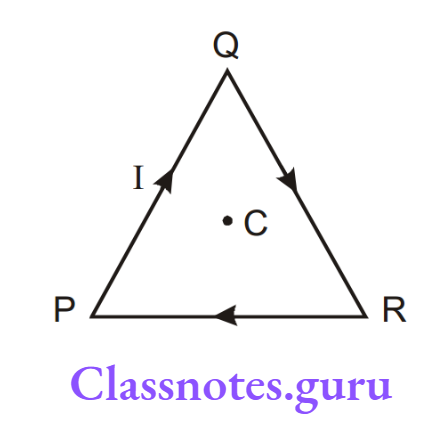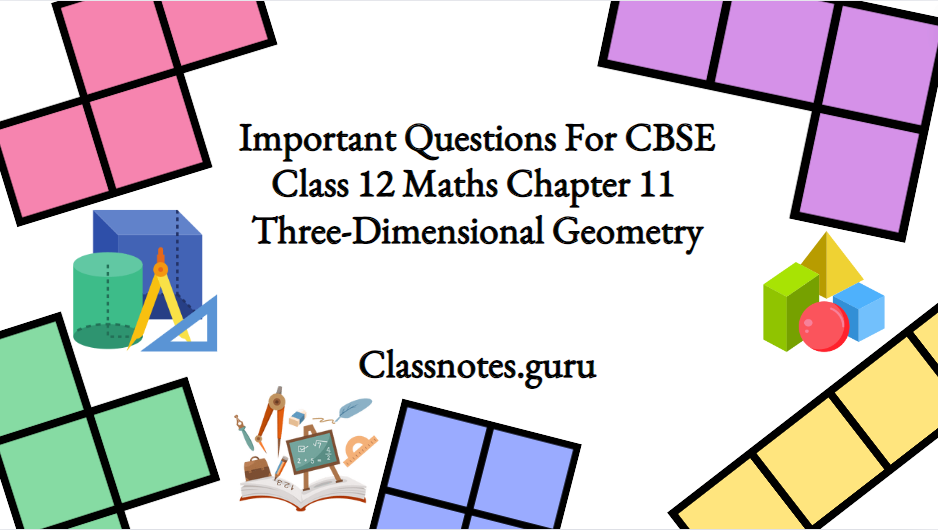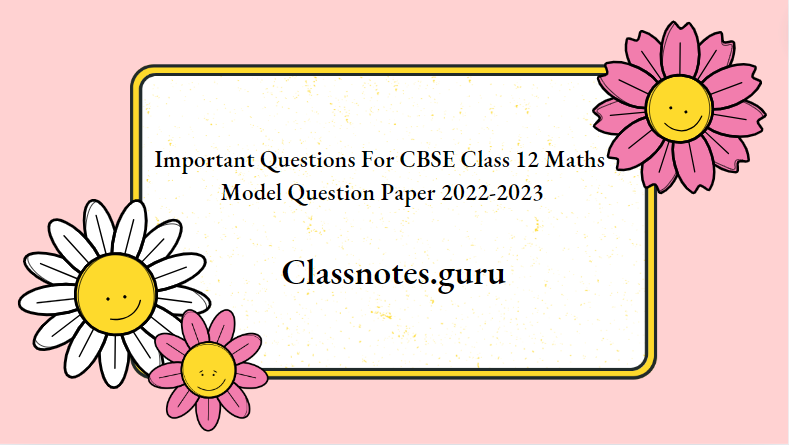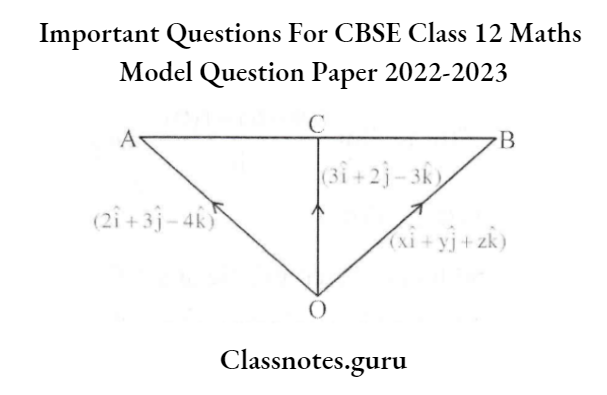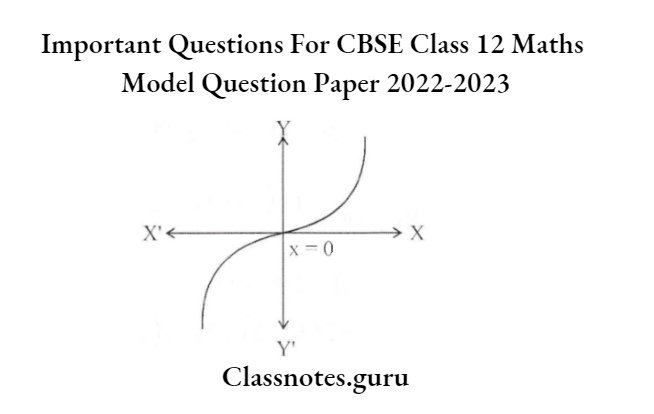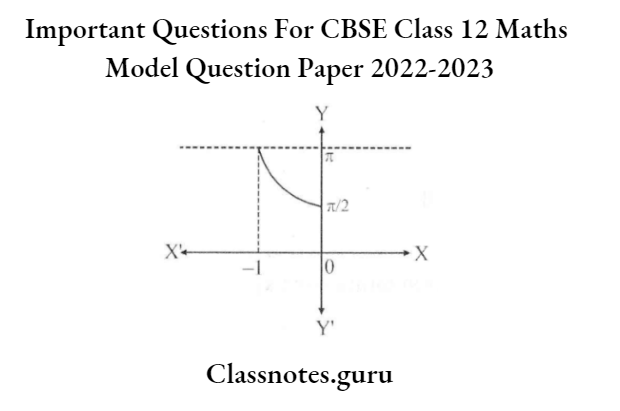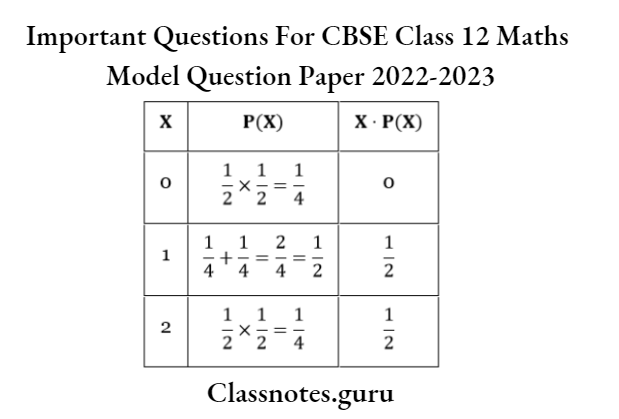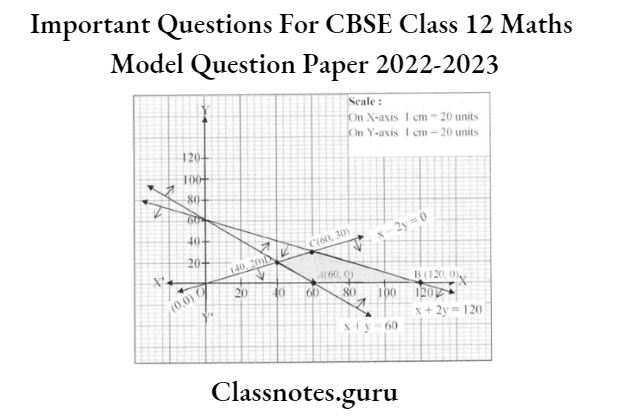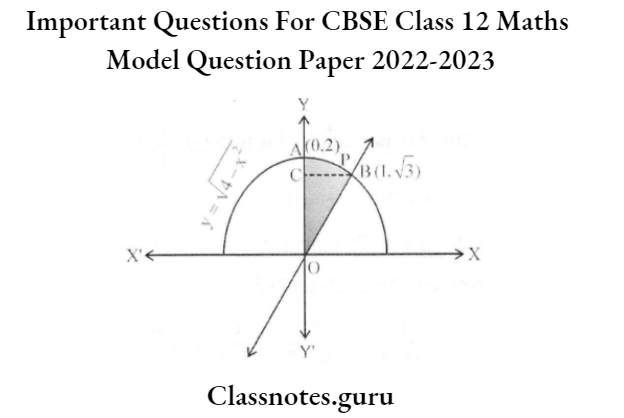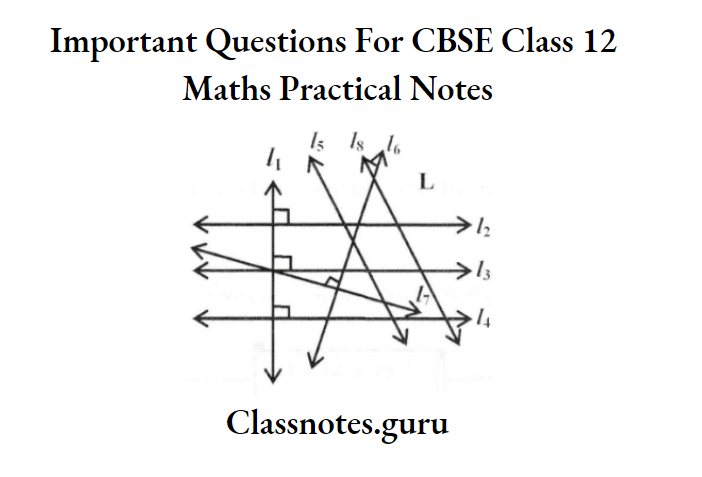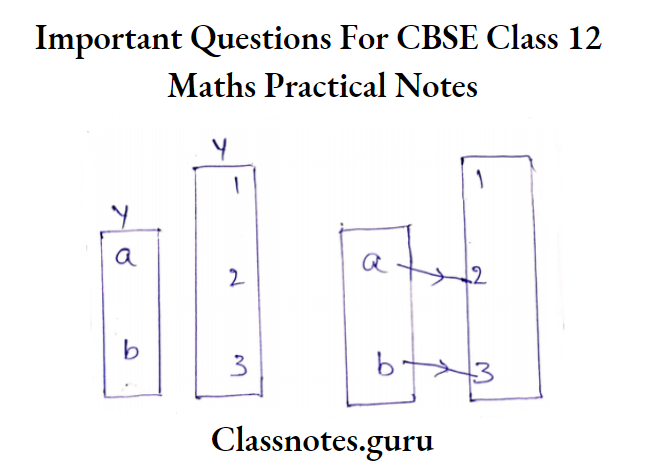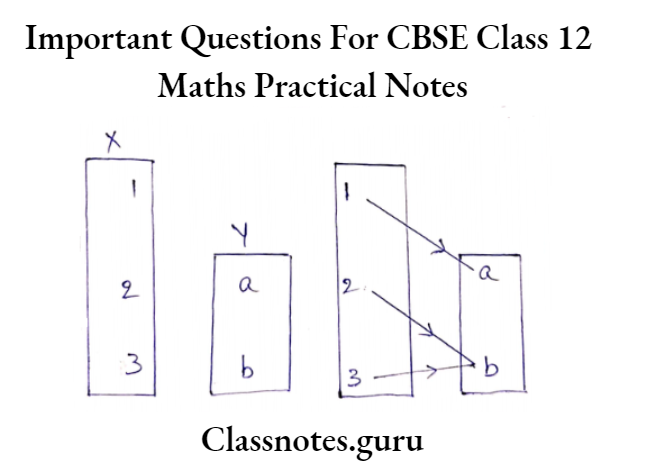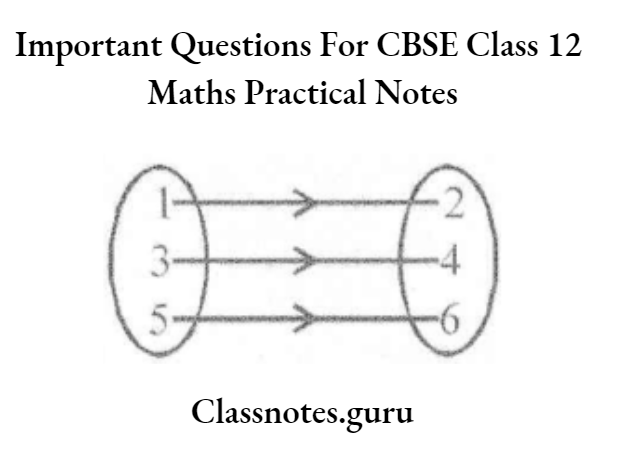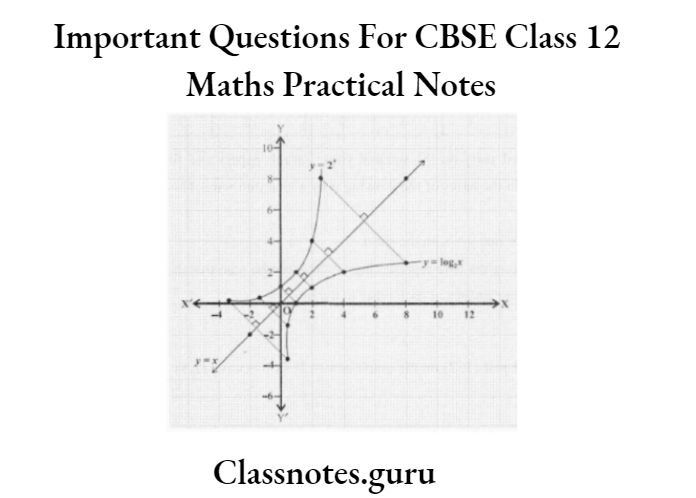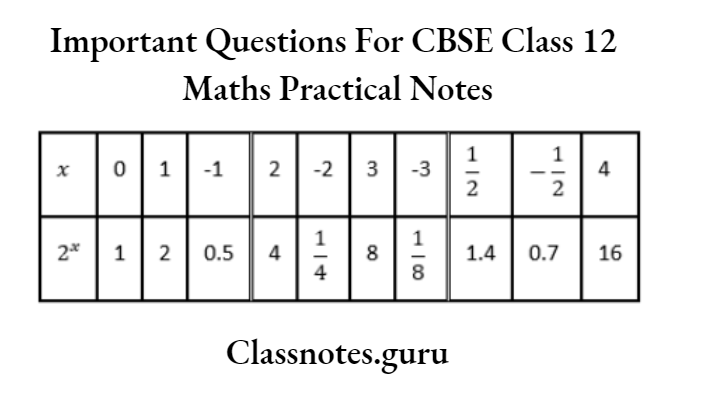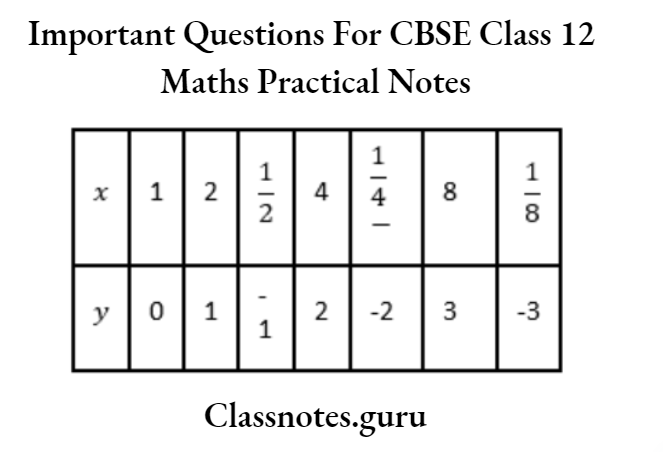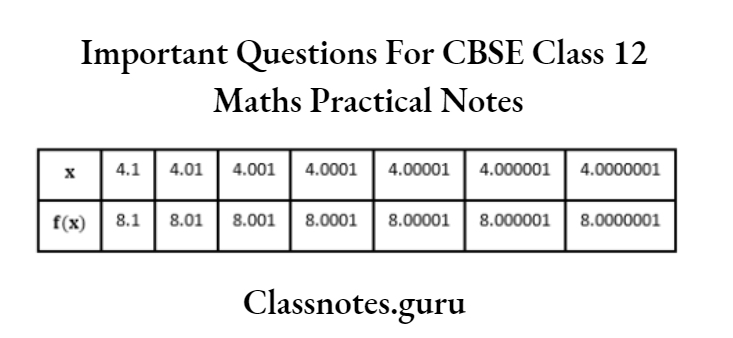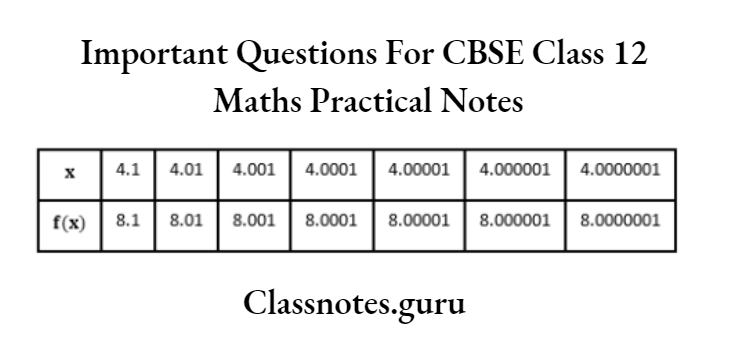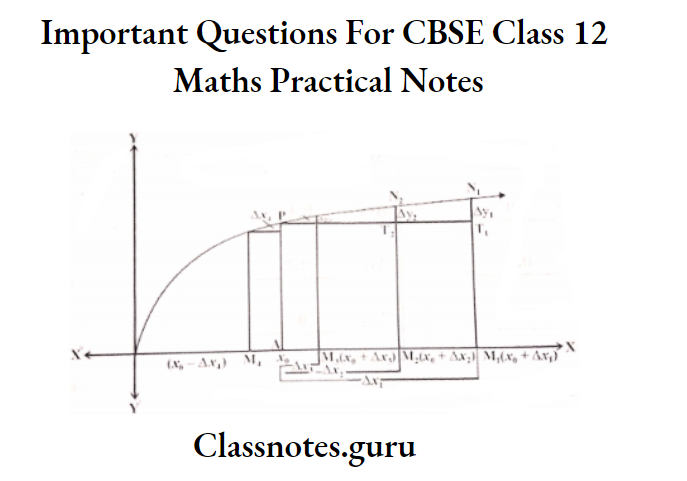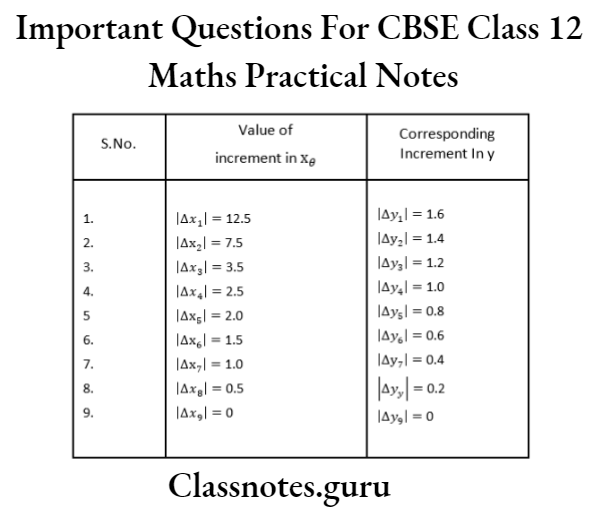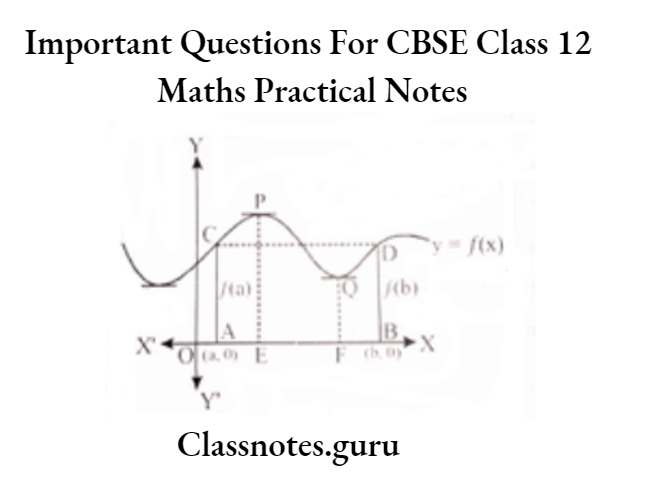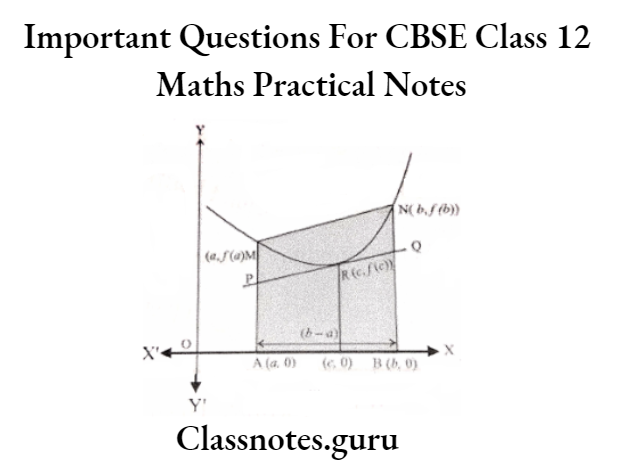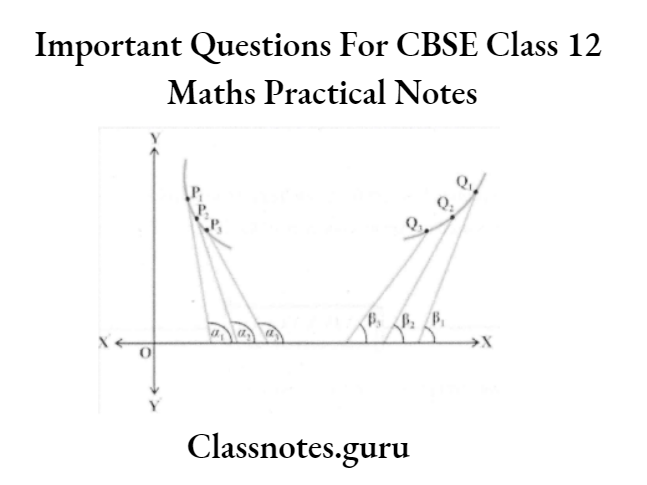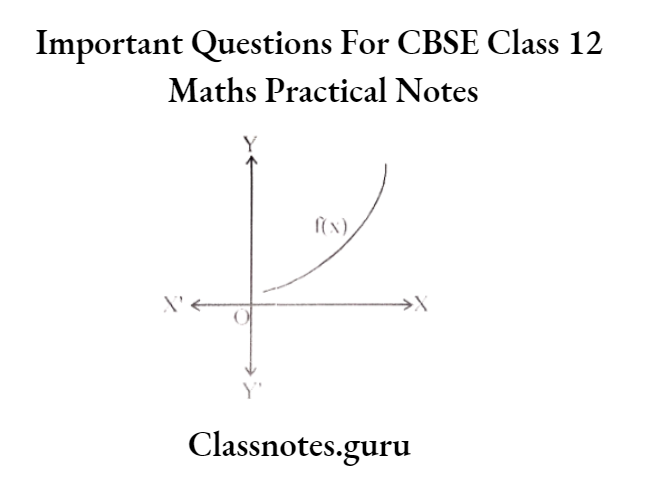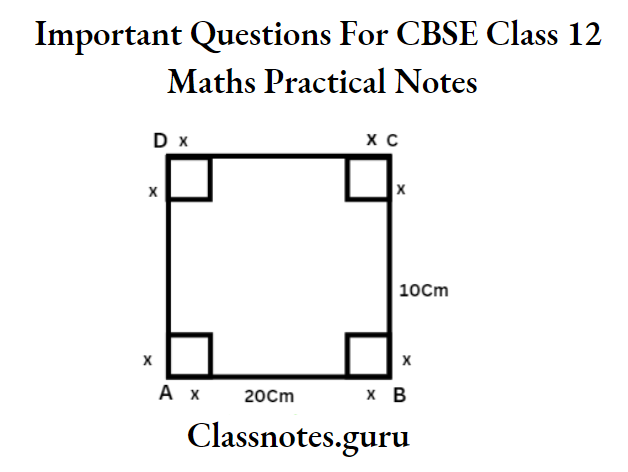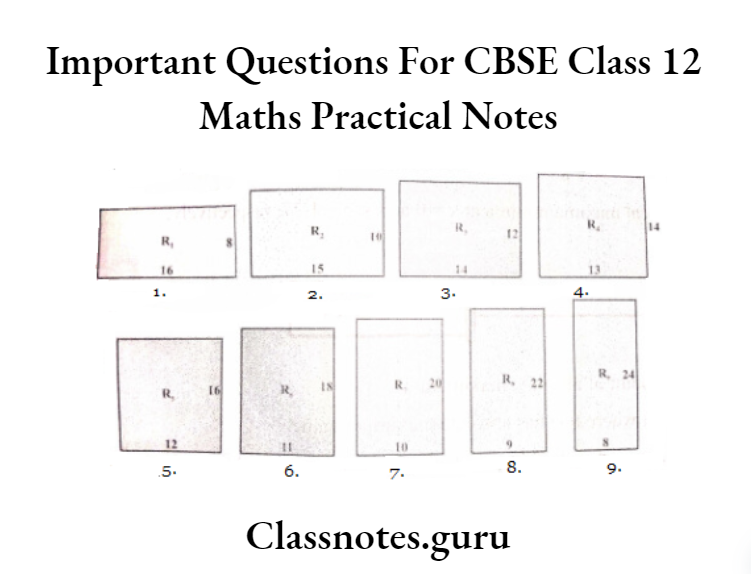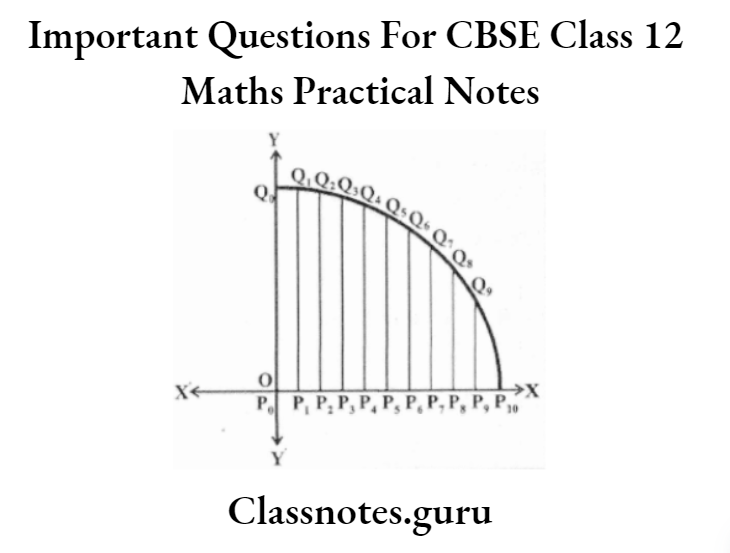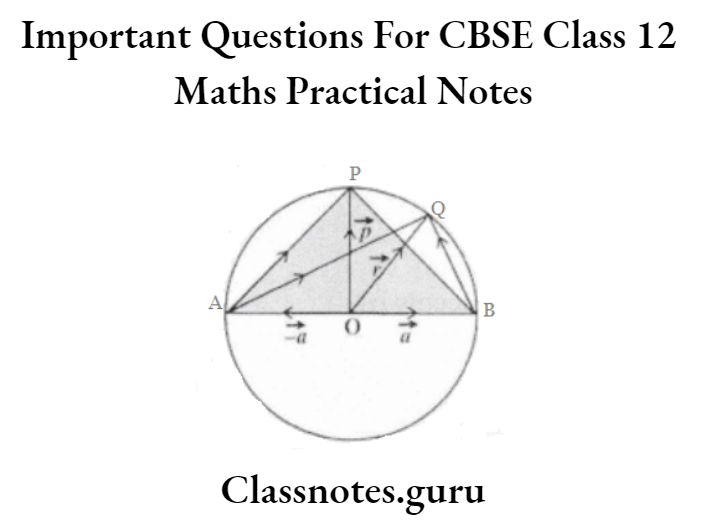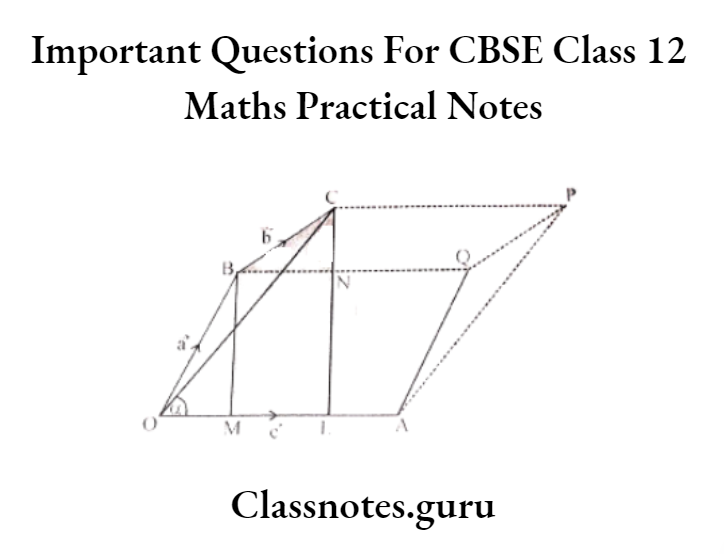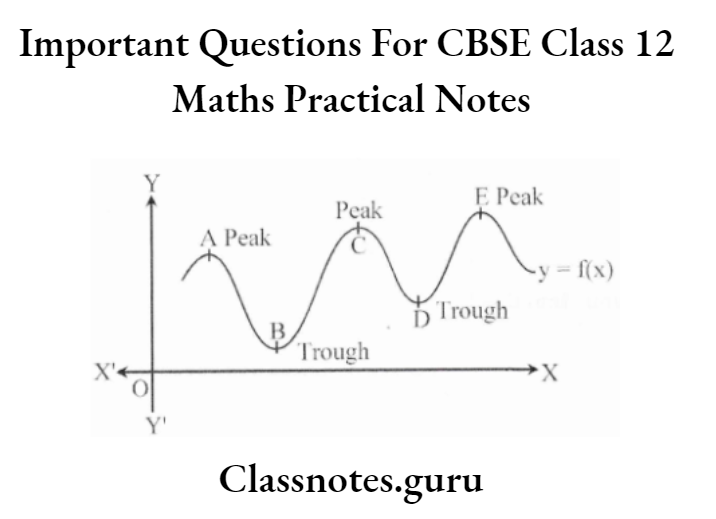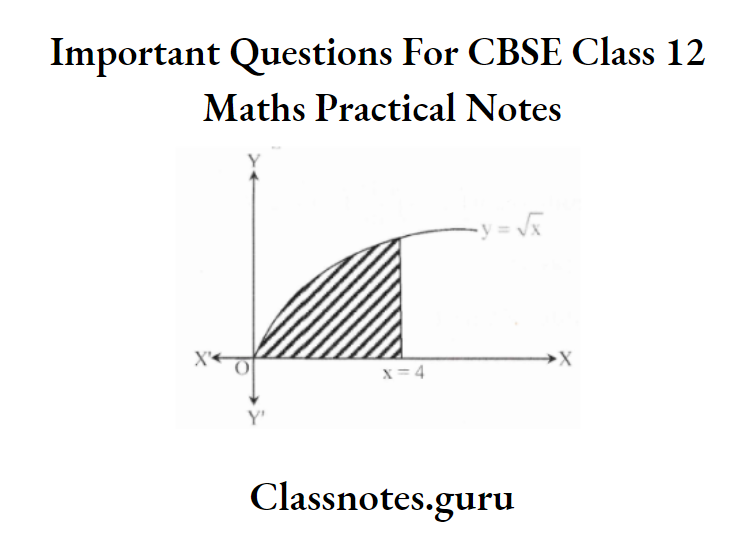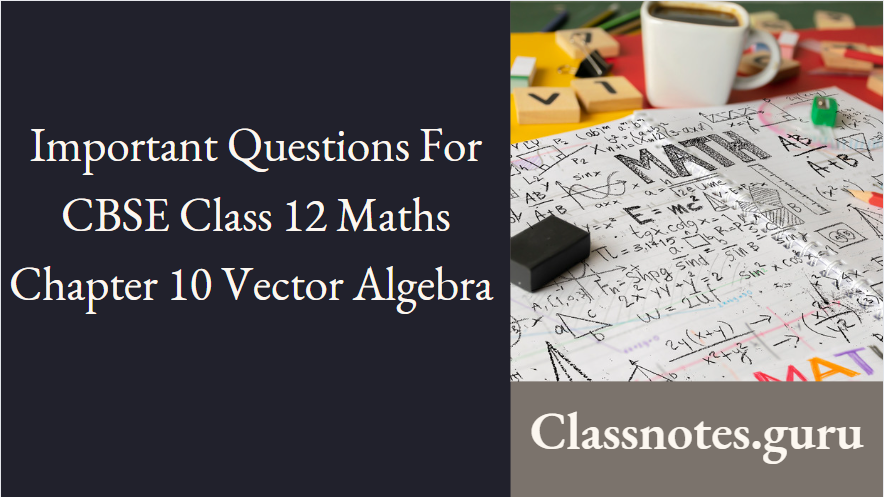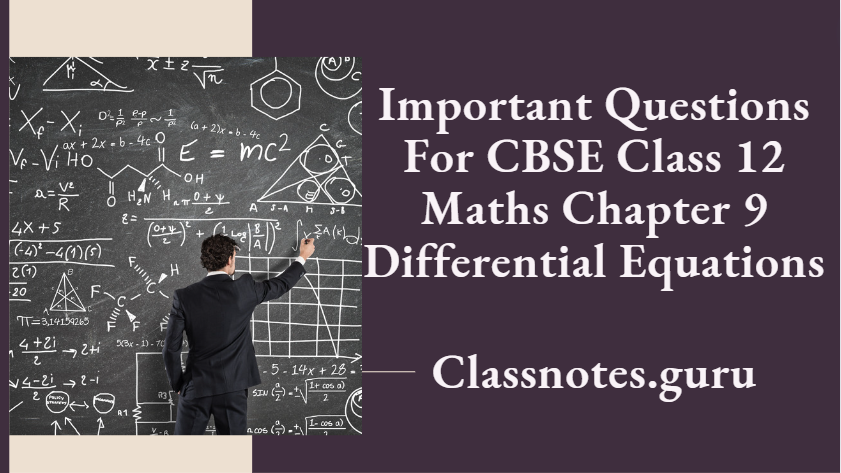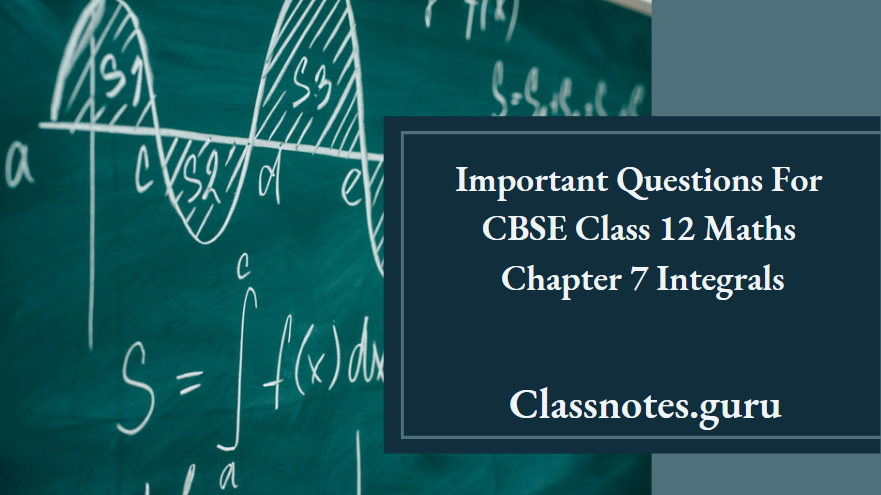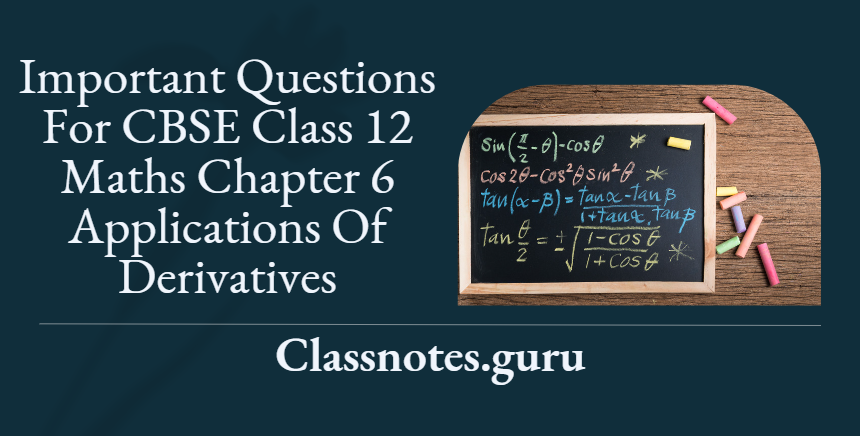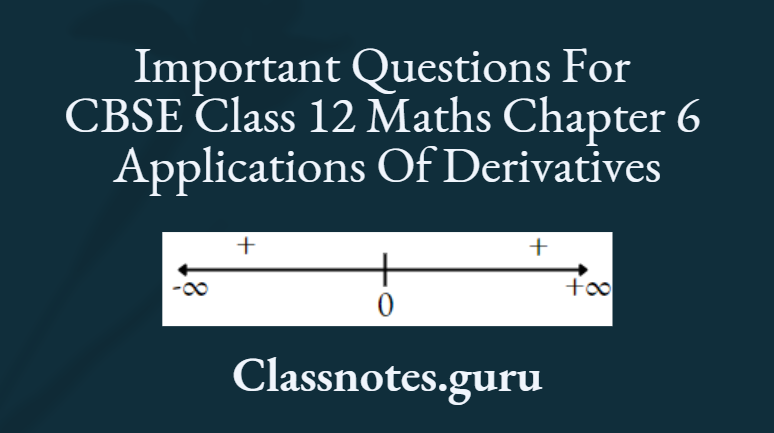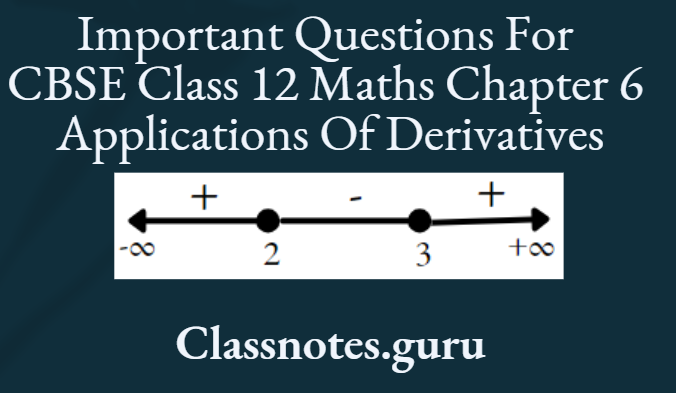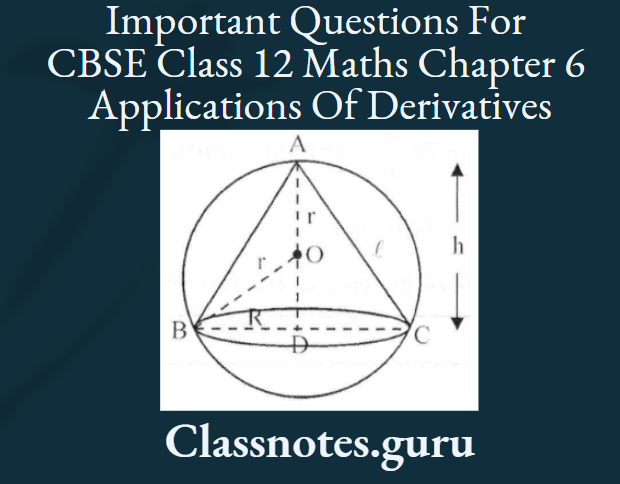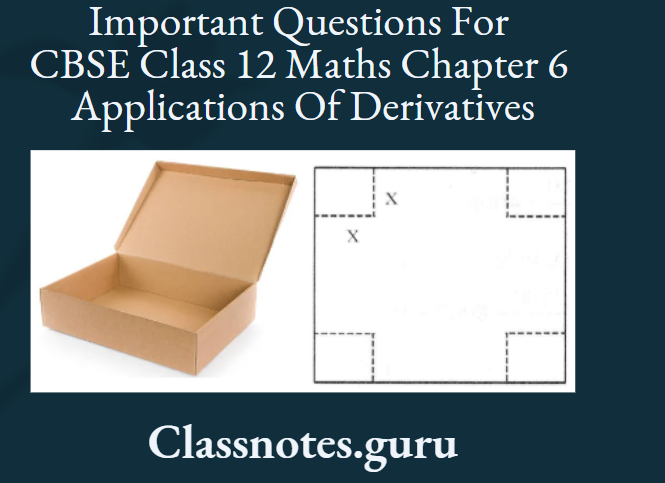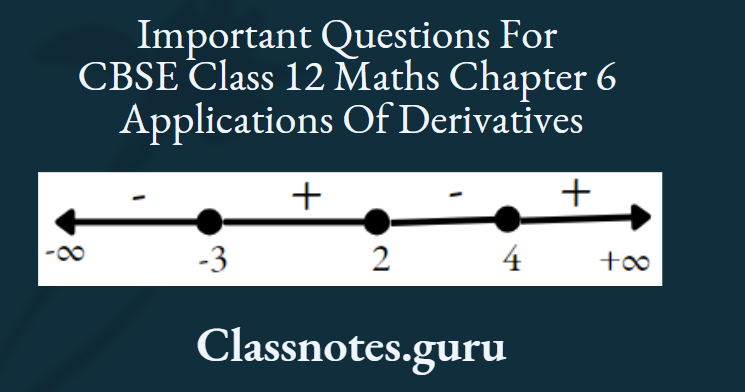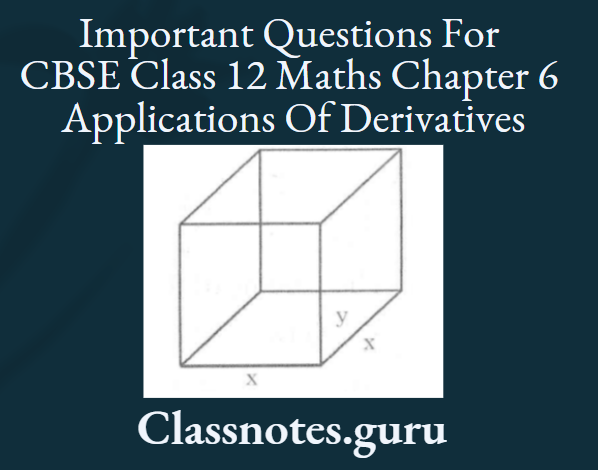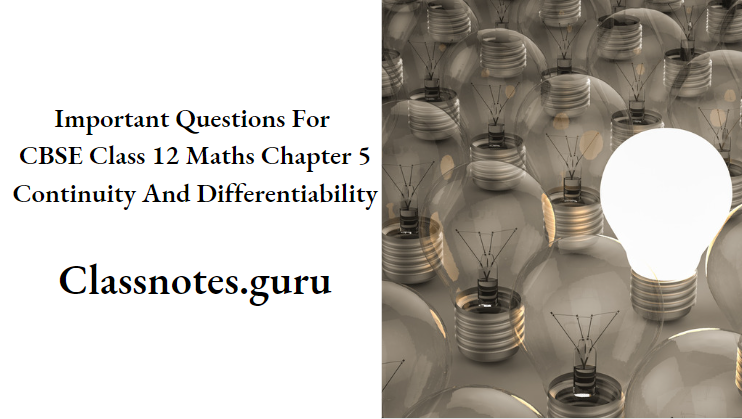Chapter 1 Magnetic Field Multiple Choice Questions Section (A): Magnet And Magnetic Field Due To A Moving Charge
Question 1. The charge on a particle is 100 times that of the electron. It is revolving in a circular path of radius 0.8 m at a frequency of 1011 revolutions per second. The magnetic field at the centre of the path will be
- \(10^{-7} \mu_0\)
- \(\frac{10^{-7}}{\mu_0}\)
- \(10^{-17} \mu_0\)
- \(10^{-6} \mu_{}\)
Answer: 4. \(10^{-6} \mu_{}\)
Question 2. Gauss is the unit of –
- Magnetic induction
- Intensity of magnetization
- dipole moment
- None of these
Answer: 1. Magnetic induction
Question 3. A ring of radius r is uniformly charged with charge q. If the ring is rotated about its axis with angular frequency ω, then the magnetic induction at its centre will be –
- \(10^{-7} \times \frac{\omega}{q r}\)
- \(10^{-7} \times \frac{q}{\omega r}\)
- \(10^{-7} \times \frac{r}{q \omega}\)
- \(10^{-7} \times \frac{r}{q \omega}\)
Answer: 3. \(10^{-7} \times \frac{r}{q \omega}\)
Magnetic Field MCQs for NEET Physics Class 12
Question 4. If an electron revolves in the path of a circle of radius of 0.5 × 10–10 m at a frequency of 5 × 1015 cycles/s, the equivalent electric current in the circle is (charge of an electron 1.6 × 10 –19 C)
- 0.4mA
- 0.8mA
- 1.2mA
- 1.6mA
Answer: 4. 1.2mA
Question 5. A charged particle moves through a magnetic field in a direction perpendicular to it. Then the :
- Acceleration remains unchanged
- Velocity remains unchanged
- The speed of the particle remains unchanged
- The direction of the particle remains unchanged
Answer: 3. Speed of the particle remains unchanged
Question 6. A particle mass m, charge Q and kinetic energy T enter a transverse uniform magnetic field of B induction. After 3 s the kinetic energy of the particle will be
- 3T
- 2T
- T
- 4T
Answer: 3. T
Question 7. If a current is passed through a spring then the spring will :
- Expand
- Compress
- Remain same
- None of these
Answer: 2. Compress
Question 8. At a specific instant emission of radioactive compound is deflected in a magnetic field. The compound can emit:
- Electrons
- Protons
- He2+
- Neutrons
The emission at the instant can be 1, 2, 3
- 1, 2, 3,4
- 4
- 2,3
Answer: 1. 1, 2, 3
Chapter 1 Magnetic Field Multiple Choice Questions Section B: Magnetic Field Due To A Straight Wire
Question 1. A thin wire is bent to form a square loop ABCD. A battery of e.m.f 2V is connected between points A and C. The magnetic induction due to the current in the loop at centre O will-

- Be zero
- Point away from the plane of paper
- point along the plane of the paper
- Point into the plane of paper
Answer: 1. Be zero
Question 2. A small linear segment of an electric circuit is lying on the x-axis extending from \(x=-\frac{a}{2} \text { to } x=\frac{a}{2}\) and a current i is flowing in it. The magnetic induction due to the segment at a point x = a on the x-axis will be
- α a
- zero
- α a2
- \(\propto \frac{1}{\mathrm{a}}\)
Answer: 2. zero
Question 3. A current i is flowing in a straight conductor of length L. The magnetic induction at a point distant \(\frac{\mathrm{L}}{4}\) from its centre will be
- \(\frac{4 \mu_0 \mathrm{i}}{\sqrt{5} \pi \mathrm{L}}\)
- \(\frac{\mu_0 i}{2 \pi L}\)
- \(\frac{\mu_0 \mathrm{i}}{\sqrt{2} \mathrm{~L}}\)
- Zero
Answer: 1. \(\frac{4 \mu_0 \mathrm{i}}{\sqrt{5} \pi \mathrm{L}}\)
Question 4. Two insulated wires of infinite length are lying mutually at right angles to each other as shown in. Currents of 2A and 1.5A respectively are flowing in them. The value of magnetic induction at point P will be

- \(2 \times 10^{-3} \mathrm{~N} / \mathrm{A}-\mathrm{m}\)
- \(2 \times 10^{-5} \mathrm{~N} / \mathrm{A}-\mathrm{m}\)
- \(1.5 \times 10^{-5} \text { tesla }\)
- \(2 \times 10^{-4} \mathrm{~N} / \mathrm{A}-\mathrm{m}\)
Answer: 3. \(1.5 \times 10^{-5} \text { tesla }\)
Question 5. A current of I ampere is flowing in an equilateral triangle of side a. The magnetic induction at the centroid will be
- \(\frac{\mu_0 \mathrm{i}}{3 \sqrt{3} \pi a}\)
- \(\frac{3 \mu_0 \mathrm{i}}{2 \pi \mathrm{a}}\)
- \(\frac{5 \sqrt{2} \mu_0 i}{3 \pi a}\)
- \(\frac{9 \mu_0 i}{2 \pi a}\)
Answer: 4. \(\frac{9 \mu_0 i}{2 \pi a}\)
Question 6. A current is flowing in a hexagonal coil of side a (Fig.). The magnetic induction at the centre of the coil will be

- \(\frac{3 \sqrt{3} \mu_0 \mathrm{i}}{\pi a}\)
- \(\frac{\mu_0 i}{3 \sqrt{3} \pi a}\)
- \(\frac{\mu_0 i}{\sqrt{3} \pi a}\)
- \(\frac{\sqrt{3} \mu_0 \mathrm{i}}{\pi a}\)
Answer: 4. \(\frac{\sqrt{3} \mu_0 \mathrm{i}}{\pi a}\)
Question 7. A straight wire of diameter 0.5 mm carrying a current of 1A is replaced by another wire of diameter 1 mm carrying the same current. The strength of the magnetic field far away is:
- Twice the earlier value
- One-half of the earlier value
- One-quarter of the earlier value
- Same as the earlier value
Answer: 4. Same as earlier value
Question 8. Two long parallel wires P and Q are held at a distance of 5m between them. If P and Q carry current of 2.5 amp and 5 amp respectively in the same direction, then the magnetic field at a point halfway between the wires is

- \(\frac{\mu_0}{\pi}\)
- \(\frac{\sqrt{3} \mu_0}{2 \pi}\)
- \(\frac{\mu_0}{2 \pi}\)
- \(\frac{3 \mu_0}{2 \pi}\)
Answer: 3. \(\frac{\mu_0}{2 \pi}\)
Question 9. A long straight wire carries an electric current of 2 A. The magnetic induction at a perpendicular distance of 5m from the wire will be
- 4 × 10–8 T
- 8 × 10–8 T
- 12 × 10–8 T
- 16 × 10–8 T
Answer: 2. 8 × 10–8 T
Question 10. The strength of the magnetic field at a point distant r near a long straight current-carrying wire is B. The field at a distance of r/2 will be
- B/2
- B/4
- 4B
- 2B
Answer: 4. 2B
Question 11. A wire in the form of a square of side ‘a’ carries a current ‘i’. Then the magnetic induction at the centre of the square wire is (Magnetic permeability of free space = u0)
- \(\frac{\mu_0 \mathrm{i}}{2 \pi \mathrm{a}}\)
- \(\frac{\mu_{\mathrm{o}} \mathrm{i} \sqrt{2}}{\pi \mathrm{a}}\)
- \(\frac{2 \sqrt{2} \mu_0 i}{\pi a}\)
- \(\frac{\mu_0 \mathrm{i}}{\sqrt{2} \pi a}\)
Answer: 3. \(\frac{2 \sqrt{2} \mu_0 i}{\pi a}\)
Question 12. The vector form of Biot-Savart’s law for a current carrying element is
- \(\mathrm{d} \overrightarrow{\mathrm{B}}=\frac{\mu_0}{4 \pi} \frac{\mathrm{Id} \vec{I} \sin \phi}{\mathrm{r}^2}\)
- \(\mathrm{d} \vec{B}=\frac{\mu_0}{4 \pi} \frac{I d / \times \hat{r}}{r^2}\)
- \(\mathrm{d} \overrightarrow{\mathrm{B}}=\frac{\mu_0}{4 \pi} \frac{\mathrm{Id} \vec{I} \times \hat{\mathrm{r}}}{\mathrm{r}^3}\)
- \(\mathrm{d} \overrightarrow{\mathrm{B}}=\frac{\mu_0}{4 \pi} \frac{\mathrm{Id} \vec{l} \times \hat{\mathrm{r}}}{\mathrm{r}^2}\)
Answer: 4. \(\mathrm{d} \overrightarrow{\mathrm{B}}=\frac{\mu_0}{4 \pi} \frac{\mathrm{Id} \vec{l} \times \hat{\mathrm{r}}}{\mathrm{r}^2}\)
Question 13. Two long straight wires are kept parallel. A current of 1 ampere is flowing in each wire in the same direction. The distance between them is 2r. The intensity of the magnetic field at the midpoint between them :

- \(\frac{\mu_0 \mathrm{i}}{\mathrm{r}}\)
- \(\frac{4 \mu_0 \mathrm{i}}{\mathrm{r}}\)
- 0
- \(\frac{\mu_0 i}{4 r}\)
Answer: 3. 0
Question 14. Two infinitely long, thin, insulated, straight wires lie in the x-y plane along the x and y-axis respectively. Each wire carries a current I, respectively in the positive x-direction and positive y-direction. The magnetic field will be zero at all points on the straight line:
- y=x
- y=-x
- y=x-1
- y=-x+1
Answer: 1. y=x
NEET Physics Chapter 1 Magnetic Field MCQs
Question 15. Two parallel, long wires carry currents i 1 and i2 with i1 > i2. When the current is in the same direction, the magnetic field at a point midway between the wire is 10uT. If the direction of i 2 is reversed, the field becomes 30T. The ratio i1/i2 is
- 4
- 3
- 2
- 1
Answer: 3. 2
Question 16. Two long parallel wires are at a distance 2d apart. They carry steady equal currents flowing out of the plane of the paper, as shown. The variation of the magnetic field B along the XX’ is given by

Answer: 2.
Question 17. Wires 1 and 2 carrying currents i1 and i2 respectively are inclined at an angle to each other. What is the force on a small element dl of wire 2 at distance r from wire 1 (as shown in the figure) due to the magnetic field of wire 1?

- \(\frac{\mu_0}{2 \pi \mathrm{r}} \mathrm{i}_1 \mathrm{i}_2 \mathrm{dl} \tan \theta\)
- \(\frac{\mu_0}{2 \pi \mathrm{r}} \mathrm{i}_1 \mathrm{i}_2 \mathrm{dl} \sin \theta\)
- \(\frac{\mu_0}{4 \pi r} i_1 i_2 \mathrm{dl}(\cos \theta+1)\)
- \(\frac{\mu_0}{4 \pi \mathrm{r}} \mathrm{i}_1 \mathrm{i}_2 \mathrm{dl} \sin \theta\)
Answer: 3. \(\frac{\mu_0}{4 \pi r} i_1 i_2 \mathrm{dl}(\cos \theta+1)\)
Question 18. A current i ampere flows along an infinitely long straight thin-walled tube, then the magnetic induction at any point inside the tube is:
- Infinite
- zero
- \(\frac{\mu_0}{4 \pi}, \frac{2 i}{r} \text { tesla }\)
- \(\frac{2 i}{r} \text { tesla }\)
Answer: 2. zero
Question 19. A long straight wire of radius a carries a steady current i. The current is uniformly distributed across its cross-section. The ratio of the magnetic field at \(\frac{a}{2}\) and 2a from axis is
- 1/4
- 4
- 1
- 1/2
Answer: 3. 1
Question 20. A current flows along the length of an infinitely long, straight, thin-walled pipe. Then :
- The magnetic field is zero only on the axis of the pipe
- The magnetic field is different at different points inside the pipe
- The magnetic field at any point inside the pipe is zero
- The magnetic field at all points inside the pipe is the same, but not zero
Answer: 3. The magnetic field at any point inside the pipe is zero
Question 21. Two identical conducting wires AOB and COD are placed at right angles to each other. The wire AOB carries an electric current I2 and COD carries a current O. The magnetic field on a point lying at a distance d from O, in a direction perpendicular to the plane of the wires AOB and COD, will be given by
- \(\frac{\mu_0}{2 \pi}\left(\frac{I_1+I_2}{d}\right)^{1 / 2}\)
- \(\frac{\mu_0}{2 \pi \mathrm{d}}\left(\mathrm{I}_1^2+\mathrm{I}_2^2\right)^{1 / 2}\)
- \(\frac{\mu_0}{2 \pi \mathrm{d}}\left(\mathrm{I}_1+\mathrm{I}_2\right)\)
- \(\frac{\mu_0}{2 \pi \mathrm{d}}\left(\mathrm{I}_1^2+\mathrm{I}_2^2\right)\)
Answer: 2. \(\frac{\mu_0}{2 \pi \mathrm{d}}\left(\mathrm{I}_1^2+\mathrm{I}_2^2\right)^{1 / 2}\)
Chapter 1 Magnetic Field Multiple Choice Questions Section C: Magnetic Field Due To A Circular Loop
Question 1. An electric current i is flowing in a circular coil of radius a. At what distance from the center on the axis of the coil will the magnetic field be 1/8th of its value at the center?
- 3a
- \(\sqrt{3} a\)
- \(\frac{a}{3}\)
- \(\frac{a}{\sqrt{3}}\)
Answer: 2. 3a
Question 2. The ratio of magnetic inductions at the center of a circular coil of radius a and on its axis at a distance equal to its radius will be
- \(\frac{1}{\sqrt{2}}\)
- \(\frac{\sqrt{2}}{1}\)
- \(\frac{1}{2 \sqrt{2}}\)
- \(\frac{2 \sqrt{2}}{1}\)
Answer: 1. \(\frac{1}{\sqrt{2}}\)
Question 3. A wire loop PQRSP is constructed by joining two semi-circular coils of radii r1 and r2 respectively as shown in Fig. Current i is flowing in the loop. The magnetic induction at point O will be

- \(\frac{\mu_0 i}{4}\left[\frac{1}{r_1}-\frac{1}{r_2}\right]\)
- \(\frac{\mu_0 \mathrm{i}}{4}\left[\frac{1}{r_1}+\frac{1}{r_2}\right]\)
- \(\frac{\mu_0 i}{2}\left[\frac{1}{r_1}-\frac{1}{r_2}\right]\)
- \(\frac{\mu_0 \mathrm{i}}{2}\left[\frac{1}{r_1}+\frac{1}{r_2}\right]\)
Answer: 3. \(\frac{\mu_0 i}{2}\left[\frac{1}{r_1}-\frac{1}{r_2}\right]\)
Question 4. The magnetic field on the axis of a current-carrying circular coil of radius at a distance 2a from its centre will be
- \(\frac{\mu_0 i}{2}\)
- \(\frac{\mu_0 i}{10 \sqrt{5} a}\)
- \(\frac{\mu_0 \mathrm{i}}{4 \mathrm{a}}\)
- \(\mu_0 i\)
Answer: 2. \(\frac{\mu_0 i}{10 \sqrt{5} a}\)
Question 5. The use of Helmholtz coils is to produce –
- Uniform magnetic field
- Non-uniform magnetic field
- Varying magnetic field
- Zero magnetic field
Answer: 1. Uniform magnetic field
Question 6. Two similar coils of radius R and several turns N are lying concentrically with their planes at right 3 angles to each other. The currents flowing in them are I and I respectively. The resultant magnetic induction at the centre will be (in Wb/m2).
- \(\frac{\mu_0 \mathrm{NI}}{2 \mathrm{R}}\)
- \(\frac{\mu_0 \mathrm{NI}}{\mathrm{R}}\)
- \(\sqrt{3} \mu_0 \frac{\mathrm{NI}}{2 \mathrm{R}}\)
- \(\sqrt{5} \frac{\mu_0 \mathrm{NI}}{2 \mathrm{R}}\)
Answer: 2. \(\frac{\mu_0 \mathrm{NI}}{\mathrm{R}}\)
Question 7. Two similar coils are kept mutually perpendicular such that their centres coincide. At the centre, find the ratio of the magnetic field due to one coil and the resultant magnetic field through both coils, if the same current is flown:
- \(1: \sqrt{2}\)
- 1:2
- 1:3
- \(\sqrt{3}: 1\)
Answer: 1. \(1: \sqrt{2}\)
Question 8. A coil of one turn is made of a wire of a certain length and then from the same length a coil of two turns is made. If the same current is passed in both cases, then the ratio of the magnetic induction at their centres will be
- 2:1
- 1:4
- 4:1
- 1:2
Answer: 2. 1:4
Question 9. Magnetic field due to 0.1A current flowing through a circular coil of radius 0.1 m and 1000 turns at the centre of the coil is
- 0.2T
- 2 ×10–4 T
- 6.28 ×10–4 T
- 9.8 ×10–4 T
Answer: 3. 6.28 ×10–4 T
Question 10. Magnetic field due to a ring having n turns at a distance x from the centre on its axis is proportional to (if r = radius of the ring)
- \(\frac{r}{\left(x^2+r^2\right)}\)
- \(\frac{r^2}{\left(x^2+r^2\right)^{3 / 2}}\)
- \(\frac{n r^2}{\left(x^2+r^2\right)^{3 / 2}}\)
- \(\frac{n^2 r^2}{\left(x^2+r^2\right)^{3 / 2}}\)
Answer: 3. \(\frac{n r^2}{\left(x^2+r^2\right)^{3 / 2}}\)
Question 11. A circular arc of wire subtends an angle \(\frac{\pi}{2}\) at the centre. If it carries a current I and its radius of curvature is R, then the magnetic field at the centre of the arc is
- \(\frac{\mu_0 I}{8 R}\)
- \(\frac{\mu_0 \mathrm{I}}{\mathrm{R}}\)
- \(\frac{\mu_0 I}{2 R}\)
- \(\frac{\mu_0 I}{4 R}\)
Answer: 1. \(\frac{\mu_0 I}{8 R}\)
Question 12. The magnetic field of a given length of wire carrying a current for a single-turn circular coil at the centre is B, then its value for two turns for the same wire, when the same current passes through it, is
- \(\frac{B}{4}\)
- \(\frac{B}{2}\)
- 2B
- 4B
Answer: 4. 4B
Question 13. If in a circular coil A of radius R, current i is flowing and in another coil B of radius 2R a current 2i is flowing, then the ratio of the magnetic fields, BA and BB produced at the centre by them will be :
- 1
- 2
- 1/2
- 4
Answer: 1. 1
Question 14. A long wire carries a steady current. It is bent into a circle of one turn and the magnetic field at the centre of the coil is B. It is then bent into a circular loop of n turns. The magnetic field at the centre of the coil will be:
- nB
- n2B
- 2nB
- 2n2B
Answer: 2. n2B
Question 15. The magnetic field due to a current carrying circular loop of radius 3 cm at a point on the axis at a distance of 4 cm from the centre is 54 T. What will be its value at the centre of the loop?
- 250 μT
- 150 μT
- 125 μT
- 75μT
Answer: 1. 250 μT
Question 16. A long solenoid has 200 turns per cm and carries a current i. The magnetic field at its centre is 6.28×10–2 Weber/m2. Another long solenoid has 100 turns per cm and it carries a current i/3. The value of the magnetic field at its centre is
- 1.05 × 10–4 Weber/m2
- 1.05 × 10–2 Weber/m2
- 1.05 × 10–5 Weber/m2
- 1.05 × 1010–3 Weber/m2
Answer: 2. 1.05 × 10–2 Weber/m2
Chapter 1 Magnetic Field Multiple Choice Questions Section D: Magnetic Field Due To A Straight Wire And Circular Arc
Question 1. The magnetic induction at center O due to the arrangement shown in fig.–

- \(\frac{\mu_0 i}{4 \pi r}(1+\pi)\)
- \(\frac{\mu_0 i}{4 \pi r}\)
- \(\frac{\mu_0 i}{4 \pi r}(1-\pi)\)
- \(\frac{\mu_0 i}{r}\)
Answer: 1. \(\frac{\mu_0 i}{4 \pi r}(1+\pi)\)
Question 2. A current of 30 amp. is flowing in a conductor as shown in Fig. The magnetic induction at point O will be

- 1.5 tesla
- 1.5π × 10–4 Tesla
- zero
- O.15 Tesla
Answer: 2. 1.5π × 10–4 Tesla
Question 3. The magnetic induction at centre O in the following figure will be

- \(\frac{\mu_0 i \alpha}{4 \pi}\left(\frac{1}{r_1}-\frac{1}{r_2}\right) \odot\)
- \(\frac{\mu_0 i \alpha}{4 \pi}\left(\frac{1}{r_1}+\frac{1}{r_2}\right) \odot\)
- \(\frac{\mu_0 i \alpha}{2 \pi}\left[\frac{1}{r_1}-\frac{1}{r_2}\right] \otimes\)
- \(\frac{\mu_0 i \alpha}{2 \pi}\left[\frac{1}{r_1}+\frac{1}{r_2}\right]\)
Answer: 1. \(\frac{\mu_0 i \alpha}{4 \pi}\left(\frac{1}{r_1}-\frac{1}{r_2}\right) \odot\)
Question 4. Two circular coils 1 and 2 are made from the same wire but the radius of the 1st coil is twice that of the 2nd coil. What is the ratio of the potential difference applied across them so that the magnetic field at their centres is the same:
- 3
- 4
- 6
- 2
Answer: 2. 4
Chapter 1 Magnetic Field Multiple Choice Questions Section (E): Magnetic Field Due To A Cylinder, Large Sheet, Solenoid, Toroid And Ampere’s Law
Question 1. When the number of turns in a toroidal coil is doubled, then the value of magnetic flux density will become-
- Four times
- Eight times
- Half
- Double
Answer: 2. Eight times
Question 2. The length of a solenoid is 0.1 m and its diameter is very small. A wire is wound over it in two layers. The number of turns in the inner layer is 50 and that on the outer layer is 40. The strength of the current flowing in two layers is in the same direction and is 3 ampere. The magnetic induction in the middle of the solenoid will be
- 3.4 × 10–3 Tesla
- 3.4 × 10–3 Gauss
- 3.4 × 103 Tesla
- 3.4 × 103 Gauss
Answer: 4. 3.4 × 103 Gauss
Question 3. The magnetic field inside a long solenoid is –
- Infinite
- Zero
- Uniform
- Non-uniform
Answer: 1. Infinite
Question 4. The correct curve between the magnetic induction along the axis of a long solenoid due to current flow I in it and distance x from one end is

Answer: 2.

Question 5. A long solenoid has 200 turns per cm and carries a current of 2.5 amp. The magnetic field at its centre is μ0 = 4π × 10–7 weber/amp-m]:
- 3.14 × 10–2 weber/m²
- 6.28 × 10–2 weber/m²
- 9.42 × 10–2 weber/m²
- 12.56 × 10–2 weber/m²
Answer: 1. 3.14 × 10–2 weber/m²
Question 6. In a coaxial, straight cable, the central conductor and the outer conductor carry equal currents in opposite directions. The magnetic field is zero.

- Outside the cable
- Inside the inner conductor
- Inside the outer conductor
- In between the two conductors.
Answer: 2. Inside the inner conductor
Question 7. A wire is wound on a long rod of material of relative permeability r = 4000 to make a solenoid. If the current through the wire is 5 A and the number of turns per unit length is 1000 per metre, then the magnetic field inside the solenoid is:
- 25.12 mT
- 12.56 m T
- 12.56 T
- 25.12 T
Answer: 1. 25.12 mT
Question 8. A cylindrical wire of radius R carries current I uniformly distributed over its cross-section. If a circular \(\int \vec{B} \cdot \vec{d}\) loop of radius ‘ r ‘ is taken as a campervan loop, then the variation value over this loop with radius ‘ r ‘ of the loop will be best represented by

Answer: 2.

Question 9. A current flows along the length of an infinitely long, straight, thin-walled pipe. Then
- The magnetic field at all points inside the pipe is the same, but not zero
- The magnetic field at any point inside the pipe is zero
- The magnetic field is zero only on the axis of the pipe
- The magnetic field is different at different points inside the pipe.
Answer: 3. The magnetic field is zero only on the axis of the pipe
Question 10. A long solenoid carrying a current produces a magnetic field B along its axis. If the current is doubled and the number of turns per cm is halved, the new value of the magnetic field is:
- 2B
- 4B
- B/2
- B
Answer: 3. B/2
Question 11. A long, thick straight conductor of radius R carries current I uniformly distributed in its cross-section area. The ratio of the energy density of the magnetic field at a distance R/2 from the surface inside the conductor and outside the conductor is:
- 1: 16
- 1: 1
- 1: 4
- 9/16
Answer: 4. 9/16
Question 12. A coaxial cable is made up of two conductors. The inner conductor is solid and is of radius R1 & the outer conductor is hollow of inner radius R2 and outer radius R3. The space between the conductors is filled with air. The inner and outer conductors are carrying currents of equal magnitudes and in opposite directions. Then the variation of the magnetic field with distance from the axis is best plotted as:

Answer: 3.

Chapter 1 Magnetic Field Multiple Choice Questions Section (F): Magnetic Force On A Charge
Question 1. When a charged particle moves at right angles to a magnetic field then which of the following quantities changes-
- Energy
- Momentum
- Speed
- All Of Above
Answer: 2. Momentum
Question 2. A proton, a neutron, and an α-particle are accelerated through the same potential difference and then they enter a uniform normal magnetic field. If the radius of the circular path of the proton is 8 cm then the radius of the circular path of the deuteron will be –
- 11.31 cm
- 22 cm
- 5 cm
- 2.5 cm
Answer: 1. 11.31 cm
Question 3. A proton and an α-particle enter a uniform magnetic field at right angles to it with the same velocity. The period of α the particle as compared to that of the proton, will be
- Four Times
- Two Times
- Half
- One Fourth
Answer: 2. Four Times
Question 4. A charged particle with charge q is moving in a uniform magnetic field. If this particle makes some angle (0 < θ < 180º) with the magnetic field then its path will be –
- Circular
- Straight Line
- Helical
- Parabolic
Answer: 3. Helical
Question 5. If a positively charged particle is moving as shown in the fig., then it will get deflected due to the magnetic field towards

- +x direction
- +y direction
- –x direction
- +z direction
Answer: 4. +z direction
Question 6. Which of the following particles will experience maximum magnetic force (magnitude) when projected with the same velocity perpendicular to a magnetic field?
- Electron
- Proton
- He+
- Li++
Answer: 4. Li++
Question 7. An electric current enters and leaves a uniform circular wire of radius through diametrically opposite points. A charged particle q moving along the axis of the circular wire passes through its center at speed υ. The magnetic force acting on the particle when it passes through the center has a magnitude.
- \(q v \frac{\mu_0 i}{2 a}\)
- \(\mathrm{q} v \frac{\mu_0 \mathrm{i}}{2 \pi \mathrm{a}}\) m
- \(q v \frac{\mu_0 i}{a}\)
- Zero
Answer: 4. Zero
Question 8. A charged particle is moved along a magnetic field line. The magnetic force on the particle is
- Along its velocity
- Opposite to its velocity
- Perpendicular to its velocity
- Zero.
Answer: 4. Zero.
Question 9. Two particles X and Y having equal charges, after being accelerated through the same potential difference, enter a region of uniform magnetic field and describe circular paths of radii R1 and R2 respectively. The ratio of the masses of X to that of Y.
- \(\left(\frac{R_1}{R_2}\right)^{1 / 2}\)
- \(\frac{R_2}{R_1}\)
- \(\left(\frac{R_1}{R_2}\right)^2\)
- \(\frac{R_1}{R_2}\)
Answer: 3. \(\left(\frac{R_1}{R_2}\right)^2\)
Question 10. A negatively charged particle falling freely under gravity enters a region having a uniform horizontal magnetic field pointing toward the north. The particle will be deflected towards
- East
- West
- North
- South
Answer: 2. West
Question 11. A proton of mass m and charge q enters a magnetic field B with a velocity v at an angle θ with the direction of B. The radius of curvature of the resulting path is
- \(\frac{m v}{q B}\)
- \(\frac{m v \sin \theta}{q B}\)
- \(\frac{\mathrm{mv}}{\mathrm{qB} \sin \theta}\)
- \(\frac{m v \cos \theta}{q B}\)
Answer: 3. \(\frac{\mathrm{mv}}{\mathrm{qB} \sin \theta}\)
Question 12. Two particles A and B of masses m A and mB respectively and having the same charge are moving in a plane. A uniform magnetic field exists perpendicular to this plane. The speeds of the particles are vA and v B respectively and the trajectories are as shown in the figure. Then

- mAvA < mBvB
- mAvA > mBvB
- mA < mB and vA < vB
- mA = mB and vA = vB
Answer: 2. mAvA > mBvB
Question 13. A charged particle is released from rest in a region of steady and uniform electric and magnetic fields that are parallel to each other. The particle will move in a
- Straight line
- Circle
- Helix
- Cycloid
Answer: 1. Straight line
Question 14. A particle of mass M and charge Q moving with velocity describes a circular path of radius R when subjected to a uniform transverse magnetic field of induction B. The work done by the field when the particle completes one full circle is
- \(\left(\frac{m v^2}{R}\right) 2 \pi R\)
- Zero
- BQ.2πR
- BQv.2πR
Answer: 2. Zero
Question 15. An electron moves with a velocity of 1 × 103 m/s in a magnetic field of induction 0.3 T at an angle of 30°. If em of electron is 1.76 × 1011 C/kg, the radius of the path is nearly:
- 10–9 meter
- 2 × 10–8 meter
- 10–8 meter
- 10–10 meter
Answer: 3. 10–8 meter
Question 16. A charged particle of charge q and mass m enters perpendicularly in a magnetic field. The kinetic energy of the particle is E; then the frequency of rotation is :
- \(\frac{q B}{m \pi}\)
- \(\frac{q B}{2 \pi m}\)
- \(\frac{\mathrm{qBE}}{2 \pi \mathrm{m}}\)
- \(\frac{\mathrm{qB}}{2 \pi \mathrm{E}}\)
Answer: 2. \(\frac{q B}{2 \pi m}\)
Question 17. A Beam Of Particles With a Specific Charge of 108 C/Kg Is Entering With Velocity 3 × 105 M/S By Making An Angle Of 30° With The Uniform Magnetic Field Of 0.3 Tesla. Radius Of Curvature Of Path Of Particle Is
- 0.5 Cm
- 0.02 Cm
- 1.25 Cm
- 2 Cm
Answer: 4. 0.02 Cm
Question 18. If An Electron Enters A Magnetic Field With Its Velocity Pointing In The Same Direction As The Magnetic Field, Then:
- The Electron Will Turn To Its Right
- The Electron Will Turn To Its Left
- The Velocity Of The Electron Will Increase
- The Velocity Of The Electron Will Remain Unchanged
Answer: 4. The Velocity Of The Electron Will Remain Unchanged
Question 19. A Charge Of 1c Is Moving In A Perpendicular Magnetic Field Of 0.5 Tesla With A Velocity Of 10 M/Sec. Force Experienced Is:
- 5 N
- 10 N
- 0.5 N
- 0 N
Answer: 1. 5 N
Question 20. An Electron Accelerated By 200 V, Enters A Magnetic Field. If Its Velocity Is 8.4 × 10 6 M/Sec. Then (E/M) For It Will Be : (In C/Kg)
- 1.75 × 1010
- 1.75 × 1011
- 1.75 × 109
- 1.75 × 106
Answer: 2. 1.75 × 1011
Question 21. A Charge Q Is Moving In A Uniform Magnetic Field. The Magnetic Force Acting On It Does Not Depend Upon
- Charge
- Mass
- Velocity
- Magnetic Field
Answer: 2. Mass
Question 22. An Electron Is Travelling In the East Direction And A Magnetic Field Is Applied In an Upward Direction, the electron Will Deflect Towards
- South
- North
- West
- East
Answer: 2. North
Question 23. A Proton Enters A Magnetic Field With Velocity Parallel To The Magnetic Field. The Path Followed By The Proton Is A
- Circle
- Parabola
- Helix
- Straight Line
Answer: 4. Straight Line
Question 24. An electron (mass = 9.0 × 10–31 kg and charge = 1.6 × 10–19 coulomb) is moving in a circular orbit in a magnetic field of 1.0 × 10–4 Weber/m2. Its period of revolution is:
- 3.5 × 10–7 second
- 7.0 × 10–7 seconds
- 1.05 × 10–6 seconds
- 2.1 × 10—6 second
Answer: 1. 3.5 × 10–7 second
Question 25. A particle of mass 0.6 g and having a charge of 25 nC is moving horizontally with a uniform velocity of 1.2 × 104 ms–1 in a uniform magnetic field, then the value of the minimum magnetic induction is (g = 10ms–2)
- Zero
- 10 T
- 20 T
- 200 T
Answer: 3. 20 T
Question 26. An electron is moving with velocity in the direction of the magnetic field, then the force acting on the electron is:-
- Zero
- \(\mathrm{e}(\overrightarrow{\mathrm{v}} \times \overrightarrow{\mathrm{B}})\)
- \(\mathrm{e}(\overrightarrow{\mathrm{B}} \times \overrightarrow{\mathrm{v}})\)
- 200 Joule
Answer: 1. \(\mathrm{e}(\overrightarrow{\mathrm{v}} \times \overrightarrow{\mathrm{B}})\)
Question 27. A Vertical Wire Carries A Current In an Upward Direction. An Electron Beam Sent Horizontally Towards The Wire Will Be Deflected (Gravity Free Space)
- Towards Right
- Towards Left
- Upwards
- Downwards
Answer: 3. Upwards
Question 28. If An Electron And A Proton Having the Same Momentum Enter Perpendicularly To A Magnetic Field, Then :
- Curved Path Of Electron And Proton Will Be Same (Ignoring The Sense Of Revolution)
- They Will Move Undeflected
- Curved Path Of Electron Is More Curved Than That Of Proton
- Path Of Proton Is More Curved
Answer: 1. The Curved Path Of the Electron And Proton Will Be the Same (Ignoring The Sense Of Revolution)
Question 29. A Magnetic Needle Is Kept In A Non-Uniform Magnetic Field. It Experiences :
- A Torque But Not A Force
- Neither A Force Nor A Torque
- A Force And A Torque
- A Force But Not A Torque
Answer: 3. A Force And A Torque
Question 30. Two thin, long, parallel wires, separated by a distance ‘d’ carry a current of ‘i’ A in the same direction. They will:
- Attract each other with a force of \(\frac{\mu_0 i^2}{(2 \pi d)}\)
- Repel, each other with a force of \(\frac{\mu_0 i^2}{(2 \pi d)}\)
- Attract each other with a force of \(\frac{\mu_0 i^2}{\left(2 \pi d^2\right)}\)
- Repel each other with a force of \(\frac{\mu_0 i^2}{\left(2 \pi d^2\right)}\)
Answer: 1. Attract each other with a force of \(\frac{\mu_0 i^2}{(2 \pi d)}\)
Question 31. A uniform electric field and a uniform magnetic field are acting along the same direction in a certain region. If an electron is projected along the direction of the fields with a certain velocity, then :
- Its velocity will decrease
- Its velocity will increase
- It will turn toward the right of direction of motion
- It will turn towards the left of the direction of motion.
Answer: 1. Its velocity will decrease
Question 32. A charged particle of mass m and charge q travels on a circular path of radius r that is perpendicular to a magnetic field B. The time taken by the particle to complete one revolution is:
- \(\frac{2 \pi m q}{B}\)
- \(\frac{2 \pi q^2 B}{B}\)
- \(\frac{2 \pi q B}{m}\)
- \(\frac{2 \pi m}{q B}\)
Answer: 4. \(\frac{2 \pi m}{q B}\)
Question 33. In a region, steady and uniform electric and magnetic fields are present. These two fields are parallel to each other. A charged particle is released from rest in this region. The path of the particle will be a:
- Circle
- Helix
- Straight line
- Ellipse
Answer: 3. Straight line
Question 34. A charged particle with charge q enters a region of constant, uniform, and mutually orthogonal fields B E B v and with a velocity perpendicular to both and, and comes out without any change in v magnitude or direction of. Then :
- \(\overrightarrow{\mathrm{v}}=\overrightarrow{\mathrm{E}} \times \overrightarrow{\mathrm{B}} / \mathrm{B}^2\)
- \(\vec{v}=\vec{E} \times \vec{E} / B^2\)
- \(\overrightarrow{\mathrm{V}}=\overrightarrow{\mathrm{B}} \times \overrightarrow{\mathrm{E}} / \mathrm{E}^2\)
Answer: 1. \(\overrightarrow{\mathrm{v}}=\overrightarrow{\mathrm{E}} \times \overrightarrow{\mathrm{B}} / \mathrm{B}^2\)
Question 35. A charged particle moves through a magnetic field perpendicular to its direction. Then :
- The momentum changes but the kinetic energy is constant
- Both momentum and kinetic energy of the particle are not constant
- Both, the momentum and kinetic energy of the particle are constant
- Kinetic energy changes but the momentum is constant
Answer: 1. The momentum changes but the kinetic energy is constant
Question 36. A α particle is accelerated by a potential difference of 10 4V. Find the change in its direction of motion, if it enters normally in a region of thickness 0.1 m having transverse magnetic induction of 0.1 Tesla. (Given: mass of -particle is equal to 6.4 × 10–27 kg)
- 15º
- 30º
- 45º
- 60º
Answer: 2. 15º
Question 37. The figure shows a convex lens of focal length 10 cm lying in a uniform magnetic field B of magnitude 1.2 T parallel to its principal axis. A particle having a charge of 2.0 × 10 –3 C and a mass of 2.0 × 10–5 kg is projected perpendicular to the plane of the diagram with a speed of 4.8 m/s.
The particle moves along a circle with its center on the principal axis at a distance of 15 cm from the lens. The axis of the lens and the circle are the same. Show that the image of the particle goes along a circle and find the radius of that circle.

- 8 cm
- 16 cm
- 32 cm
- 64 cm
Answer: 1. 8 cm
Class 12 NEET Physics Magnetic Field Multiple Choice Questions
Chapter 1 Magnetic Field Multiple Choice Questions Section (G): Electric And Magnetic Force On A Charge
Question 1. Uniform electric and magnetic fields are produced in the same direction. An electron moves in such a way that its velocity remains in the direction of the electric field. The electron will –
- Turn towards left
- Turn towards right
- Get decelerated
- Get accelerated
Answer: 2. Turn towards right
Question 2. In the following fig., three paths of ∝ particles crossing a nucleus N are shown. The correct path is

- a and c
- a and b
- a, b and c
- only a
Answer: 1. a and c
Question 3. The distance between the plates of a parallel plate condenser is 4 mm and the potential difference between them is 200V. The condenser is placed in a magnetic field B. An electron is projected vertically upwards parallel to the plates with a velocity of 106 m/s. The electron passes undeviated through the space between the plates. The magnitude and direction of magnetic field B will be –

- 0.05T
- 0.02T
- 0.05 T Outward
- 0.02T Outward
Answer: 1. 0.05T
Question 4. A beam of protons enters a uniform magnetic field of 0.3T with a velocity of 4 × 10 5m/s in a direction making an angle of 60º with the direction of the magnetic field. The path of motion of the particle will be
- Circular
- Straight Line
- Spiral
- Helical
Answer: 4. Helical
Question 5. In the above question, the radius of the path of the particle will be
- 12.0m
- 1.2m
- 0.12m
- 0.012m
Answer: 4. 0.012m
Question 6. In the above question, the pitch of the helix will be
- 4.37 m
- 0.437 m
- 0.0437 m
- 0.00437 m
Answer: 3. 0.0437 m
Question 7. In a certain region of space electric field and magnetic field are perpendicular to each other and in B E an electron enters in region perpendicular to the direction of both and moves undeflected, The velocity of the electron is:
- \(\frac{|\vec{E}|}{|\vec{B}|}\)
- \(\vec{E} \times \vec{B}\)
- \(\frac{|\vec{B}|}{|\vec{E}|}\)
- \(\frac{|\vec{B}|}{|\vec{E}|}\)
Answer: 1. \(\frac{|\vec{E}|}{|\vec{B}|}\)
Question 8. A charged particle with velocity 2 × 103 m/s passed undeflected through an electric and perpendicular magnetic field. The magnetic field is 1.5 Tesla. Find electric field intensity.
- 2 × 103 N/C
- 1.5 × 103 N/C
- 3 × 103 N/C
- 4/3 × 10–3 N/C
Answer: 3. 3 × 103 N/C
Question 9. A charged particle moves in a region having a uniform magnetic field and a parallel, uniform electric field. At some instant, the velocity of the particle is perpendicular to the field direction. The path of the particle will be
- A Straight Line
- A Circle
- A Helix With Uniform Pitch
- A Helix With Nonuniform Pitch.
Answer: 4. A Helix With Nonuniform Pitch.
Question 10. In a mass spectrometer used for measuring the masses of ions, the ions are initially accelerated by an electric potential V and then made to describe semicircular paths of radius R using a magnetic field B. If the charge on the ions V and B are kept constant, the ratio mass of the ion will be proportional to:
- \(\frac{1}{R}\)
- \(\frac{1}{\mathrm{R}^2}\)
- R2
- R
Answer: 2. \(\frac{1}{\mathrm{R}^2}\)
Question 11. A charge ‘q’ moves in a region where the electric field and magnetic field both exit, then the force on it is:
- \(\frac{1}{R}\)
- \(\frac{1}{R^2}\)
- R2
- R
Answer: 2. \(\frac{1}{R^2}\)
Question 12. A very long straight wire carries a current I. At the instant when a charge +Q at point P has velocity, as shown, the force on the charge is:-

- Opposite To Ox
- Along Ox
- Opposite To Oy
- Along Oy
Answer: 4. Along Oy
Question 13. An electron moves in a circular orbit with a uniform speed v. It produces a magnetic field B at the center of the circle. The radius of the circle is proportional to :
- \(\frac{B}{v}\)
- \(\frac{v}{B}\)
- \(\sqrt{\frac{v}{B}}\)
- \(\sqrt{\frac{B}{v}}\)
Answer: 3. \(\sqrt{\frac{v}{B}}\)
Question 14. When a charged particle moving with velocity is subjected to a magnetic field of induction, the force on it is non-zero. This implies that:
- Angle Between And Is Necessarily 90°
- Angle Between And Can Have Any Value Other Than 90°
- Angle Between And Can Have Any Value Other Than Zero And 180°
- Angle Between And Is Either Zero Or 180°
Answer: 3. Angle Between And Can Have Any Value Other Than Zero And 180°
Question 15. Under the influence of a uniform magnetic field a charged particle is moving in a circle of radius R with constant speed v. The period of the motion :
- Depends On V And Not On R
- Depends On Both R And V
- Is Independent Of Both R And V
- Depends On R And Not On V
Answer: 3. Is Independent Of Both R And V
Question 16. In a mass spectrometer used for measuring the masses of ions, the ions are initially accelerated by an electric potential V and then made to describe semicircular paths of radius R using a describe semicircular paths of radius R using a magnetic field B. If V and B are kept constant, the ratio. \(\left(\frac{\text { charge on the ion }}{\text { mass of the ion }}\right)\) will be proportional to:
- \(\frac{1}{R}\)
- \(\frac{1}{R^2}\)
- R2
- R
Answer: 2. \(\frac{1}{R^2}\)
Question 17. A beam of electrons passes undeflected through mutually perpendicular electric and magnetic fields. If the electric field is switched off, and the same magnetic field is maintained, the electrons move:
- In an elliptical orbit
- In a circular orbit
- Along a parabolic path
- Along a straight line
Answer: 2. In a circular orbit
Question 18. A magnetic line of force inside a bar magnet:
- Are From North-Pole To South-Pole Of The Magnet
- Do Not Exist
- Depend Upon The Area Of Cross-Section Of The Bar Magnet
- Are From South-Pole To North-Pole Of The Magnet
Answer: 4. Are From South-Pole To North-Pole Of The Magnet
Question 19. An experimenter’s diary reads as follows; “a charged particle is projected in a magnetic field of \((7.0 \hat{i}-3.0 \hat{j}) \times 10^{-3} \mathrm{~T}\). The acceleration of the particle is found to be \((x \hat{i}+7.0 \hat{j}) \times 10^{-6} \mathrm{~m} / \mathrm{s}^2\). Find the value of x.
- 2
- 4
- 3
- 1
Answer: 3. 3
Chapter 1 Magnetic Field Multiple Choice Questions Section (H): Magnetic Force On A Current Carrying Wire
Question 1. A 0.5 m long straight wire in which a current of 1.2 A is flowing is kept a right angle to a uniform magnetic field of 2.0 tesla. The force acting on the wire will be –
- 2N
- 2.4 N
- 1.2 N
- 3 N
Answer: 3. 1.2 N
Question 2. Two parallel wires P and Q carry electric currents of 10 A and 2A respectively in mutually opposite directions. The distance between the wires is 10 cm. If the wire P is of infinite length and wire Q is 2m long, then the force acting Q will be –
- 4 × 10–5 N
- 8 × 10–5 N
- 4 × 105 N
- 0 N
Answer: 1. 4 × 10–5 N
Question 3. A current of 2A is flowing in a wire of length 50 cm. If this wire is lying in a uniform magnetic field of 5 × 10–4 N/A-m making an angle of 60º with the field, then the force acting on the wire will be –
- 4.33 × 10–4 N
- 4N
- 4 dyne
- zero
Answer: 1. 4.33 × 10–4 N
Question 4. A current-carrying, straight wire is kept along the axis of a circular loop carrying a current. The straight wire
- Will Exert An Inward Force On The Circular Loop
- Will Exert An Outward Force On The Circular Loop
- Will Not Exert Any Force On The Circular Loop
- Will Exert A Force On The Circular Loop Parallel To Itself.
Answer: 4. Will Exert A Force On The Circular Loop Parallel To Itself.
Question 5. A proton beam is going from north to south and an electron beam is going from south to north. Neglecting the earth’s magnetic field, the electron beam will be deflected.
- Towards The Proton Beam
- Away From The Proton Beam
- Away From The Electron Beam
- None Of These
Answer: 1. Towards The Proton Beam
Question 6. Two parallel wires carrying currents in the same direction attract each other because of
- Potential Difference Between Them
- Mutual Inductance Between Them
- Electric Force Between Them
- Magnetic Force Between Them
Answer: 4. Magnetic Force Between Them
Question 7. A conducting loop carrying a current I is placed in a uniform magnetic field pointing into the plane of the paper as shown. The loop will tend to.

- Move Along The Positive X Direction
- Move Along The Negative X Direction
- Contract
- Expand
Answer: 4. Expand
Question 8. A thin flexible wire of length L is connected to two adjacent fixed points and carries a current in the clockwise direction, as shown in the figure. When the system is put in a uniform magnetic field of strength B going into the plane of the paper, the wire takes the shape of a circle.
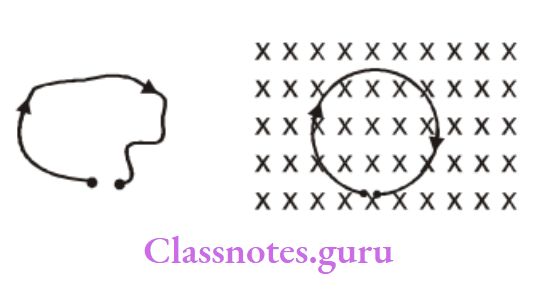
- IBL
- \(\frac{\mathrm{IBL}}{\pi}\)
- \(\frac{\mathrm{IBL}}{2 \pi}\)
- \(\frac{\mathrm{IBL}}{4 \pi}\)
Answer: 3. \(\frac{\mathrm{IBL}}{4 \pi}\)
Question 9. A rectangular loop carrying a current i is situated near a long straight wire such that the wire is parallel to one of the sides of the loop and the plane of the loop is same as the left wire. If a steady current I is established in the wire as shown in the (fig) the loop will –

- Rotate About An Axis Parallel To The Wire
- Move Away From The Wire
- Move Towards The Wire
- Remain Stationary.
Answer: 3. Move Towards The Wire
Question 10. Select the correct alternative(s): Two thin long parallel wires separated by a distance ‘b’ are carrying a current ‘i’ ampere each. The magnitude of the force per unit length exerted by one wire on the other is
- \(\frac{\mu_0 i^2}{b^2}\)
- \(\frac{\mu_0 i^2}{2 \pi b}\)
- \(\frac{\mu_0 \mathrm{i}}{2 \pi \mathrm{b}^2}\)
Answer: 2. \(\frac{\mu_0 i^2}{2 \pi b}\)
Question 11. Two parallel wires carry currents of 20 A and 40 A in opposite directions. Another wire carrying a current antiparallel to 20 A is placed midway between the two wires. The magnetic force on it will be
- Towards 20 a
- Towards 40 a
- Zero
- Perpendicular to the plane of the currents
Answer: 2. Towards 40 a
Question 12. A closed-loop PQRS carrying a current is placed in a uniform magnetic field. if the magnetic forces on segments PS, SR, and RQ are F1, F2, and F3 respectively, and are in the plane of the paper and along the directions shown the directions shown, the force on the segment QP is Two long conductors, separated by a distance d carry currents I 1 and I 2 in the same direction.
- F3 – F1 – F2
- \(\sqrt{\left(F_3-F_1\right)^2+F_2^2}\)
- \(\sqrt{\left(F_3-F_1\right)^2-F_2^2}\)
- F3 – F1 + F2
Answer: 2. \(\sqrt{\left(F_3-F_1\right)^2+F_2^2}\)
Question 13. They exert a force F on each other. Now the current in one of them is increased to two times and its direction is reversed. The distance is also increased to 3d. The new value of the force between them is :
- –2 F
- F/3
- –2F/3
- – F/3
Answer: 3. –2F/3
Chapter 1 Magnetic Field Multiple Choice Questions Section (I): Magnetic Force And Torque On A Current Carrying Loop And Magnetic Dipole Moment
Question 1. If the angular momentum of the electron is then its magnetic moment will be eJ (1)
- \(\frac{\mathrm{eJ}}{\mathrm{m}}\)
- \(\frac{e J}{2 m}\)
- eJ2m
- \(\frac{2 m}{e J}\)
Answer: 2. \(\frac{\mathrm{eJ}}{\mathrm{m}}\)
Question 2. A coil of 100 turns is lying in a magnetic field of 1T as shown in the figure. A current of 1A is flowing in this coil. The torque acting on the coil will be

- 1N–m
- 2N–m
- 3N–m
- 4N–m
Answer: 2. 2N–m
Question 3. Four wires of equal length are bent in the form of four loops P, Q, R, and S. These are suspended in a uniform magnetic field and the same current is passed in them. The maximum torque will act on.

- P
- Q
- R
- S
Answer: 4. S
Question 4. A bar magnet has a magnetic moment of 2.5 JT–1 and is placed in a magnetic field of 0.2 T. Work was done in turning the magnet from a parallel to an antiparallel position relative to the field direction.
- 0.5 J
- 1 J
- 2.0 J
- Zero
Answer: 2. 1 J
Question 5. A circular loop of area 1 cm 2, carrying a current of 10 A, is placed in a magnetic field of 0.1 T perpendicular to the plane of the loop. The torque on the loop due to the magnetic field is
- Zero
- 10-4 N-M
- 10–2 N-M
- 1 N-M
Answer: 1. Zero
Question 6. A toroid of mean radius ‘a’, cross-section radius ‘r’, and a total number of turns N. It carries a current ‘i’. The torque experienced by the toroid if a uniform magnetic field of strength B is applied :
- Is zero
- Is binπ r²
- Is binπa²
- Depends on the direction of the magnetic field.
Answer: 3. Is binπa²
Question 7. A bar magnet of magnetic moment is placed in a magnetic field of induction. The torque exerted on it is :
- \(\overrightarrow{\mathrm{M}} \vec{B}\)
- \(\overrightarrow{\mathrm{M}} \vec{B}\)
- \(\vec{M} \times \vec{B}\)
- \(-\overrightarrow{\mathrm{M}} \times \overrightarrow{\mathrm{B}}\)
Answer: 3. \(\vec{M} \times \vec{B}\)
Question 8. Current is flowing in a coil of area A and number of turns N, then magnetic moment of the coil M is equal to:
- NiA
- \(\frac{\mathrm{Ni}}{\mathrm{A}}\)
- \(\frac{\mathrm{Ni}}{\sqrt{\mathrm{A}}}\)
- N2Ai
Answer: 1. NiA
Question 9. A circular loop has a radius of 5 cm and it carries a current of 0.1 amp. Its magnetic moment is:
- 1.32 × 10–4 amp. – m²
- 2.62 × 10–4 amp. – m²
- 5.25 × 10–4 amp. – m²
- 7.85 × 10–4 amp. – m²
Answer: 4. 7.85 × 10–4 amp. – m²
Question 10. The dipole moment of a current loop is independent of
- Current In The Loop
- Number Of Turns
- Area Of The Loop
- Magnetic Field In Which It Is Situated
Answer: 4. Magnetic Field In Which It Is Situated
Question 11. Current I is carried in a wire of length L. If the wire is formed into a circular coil, the maximum magnitude of torque in a given magnetic field B will be:
- \(\frac{\text { LIB }}{4 \pi}\)
- \(\frac{\mathrm{L}^2 \mathrm{IB}}{4 \pi}\)
- \(\frac{\mathrm{L}^2 \mathrm{IB}}{2}\)
- \(\frac{\mathrm{LIB}^2}{2}\)
Answer: 2. \(\frac{\mathrm{L}^2 \mathrm{IB}}{4 \pi}\)
NEET Physics Magnetic Field MCQs with Answers
Question 12. Due to the flow of current in a circular loop of radius R, the magnetic induction produced at the center of the loop is B. The magnetic moment of the loop is = Permeability constant]:
- BR3/ 2πμ0
- 2πBR3μ0
- BR2/ 2μ0
- 2πBR2/μ0
Answer: 2. 2πBR3μ0
Question 13. The magnetic moment of a circular coil carrying current is:
- Directly proportional to the length of the wire in the coil
- Inversely proportional to the length of the wire in the coil
- Directly proportional to the square of the length of the wire in the coil
- Inversely proportional to the square of the length of the wire in the coil
Answer: 3. Directly proportional to the square of the length of the wire in the coil
Question 14. To double the torque acting on a rectangular coil of n turns when placed in a magnetic field.
- The area of the coil and the magnetic induction should be doubled
- The area or current through the coil should be doubled
- Only the area of the coil should be doubled
- The number of turns is to be halved
Answer: 2. Area or current through the coil should be doubled
Question 15. The magnetic dipole moment of a rectangular loop is
- Inversely proportional to the current in the loop
- Inversely proportional to the area of the loop
- Parallel to the plane of the loop and proportional to the area of the loop
- Perpendicular to the plane of the loop and proportional to the area of the loop
Answer: 4. Perpendicular to the plane of the loop and proportional to the area of the loop
Question 16. Two bar magnets having the same geometry with magnetic moments M and 2M are firstly placed in such a way that their similar poles are same side then their period of osculation is T1. Now the polarity of one of the magnets is reversed the period of oscillation is T1. The period of oscillations will be:-
- T1 < T2
- T1 > T2
- T1 = T2
- T2 = ∞
Answer: 2. T1 > T2
Question 17. A charged particle (charge q) is moving in a circle of radius R with uniform speed v. The associated magnetic moment μ is given by :
- \(\frac{\mathrm{qvR}}{2}d\)
- qvR²
- \(\frac{\mathrm{qvR}^2}{2}\)
- qvR
Answer: 1. \(\frac{\mathrm{qvR}}{2}\)
Question 18. A magnetic needle lying parallel to a magnetic field requires W units of work to turn it through 60º. The torque needed to maintain the needle in this position will be:
- \(\sqrt{3} W\)
- W
- \((\sqrt{3} / 2) W\)
- 2W
Answer: 1. \(\sqrt{3} W\)
Question 19. Two particles, each of mass m and charge q, are attached to the two ends of a light rigid rod of length 2 R. The rod is rotated at constant angular speed about a perpendicular axis passing through its center. The ratio of the magnitudes of the magnetic moment of the system and its angular momentum about the center of the rod is:
- \(\frac{\mathrm{q}}{2 \mathrm{~m}}\)
- \(\frac{q}{m}\)
- \(\frac{2 q}{m}\)
- \(\frac{q}{\pi m}\)
Answer: 1. \(\frac{\mathrm{q}}{2 \mathrm{~m}}\)
Question 20. A current-carrying loop is placed in a uniform magnetic field towards the right in four different orientations, arranged in the decreasing order of Potential Energy.

- 1,3,2,4
- 1,2,3,4
- 1,4,2,3
- 3,4,1,2
Answer: 1. 1,3,2,4
Question 21. A circular coil of diameter 2.0 cm has 500 turns in it and carries a current of 1.0 A. Its axis makes an angle of 30º with the uniform magnetic field of magnitude 0.40 T that exists in the space. Find the torque acting on the coil.
- π × 10-8 N – m
- π × 10-4 N – m
- π × 10-6 N – m
- π× 10-2 N – m
Answer: 4. π× 10-2 N – m
Chapter 1 Magnetic Field Multiple Choice Questions Section (J): Magnetic Field Due To A Magnet And Earth
Question 1. When a current of 1 ampere is passed in a coil lying in the magnetic meridian then a magnetic needle 8 at its center gives some deflection. If the current in the coil is increased to ampere then at what distance from the center of the coil will the deflection of the needle remain unchanged?
- 2R
- 4R
- 8R
- R
Answer: 4. 2R
Question 2. Tangent galvanometer measures:
- Capacitance
- Current
- Resistance
- Potential difference
Answer: 2. Current
Chapter 1 Magnetic Field Multiple Choice Questions Section (k): properties of magnetic material
Question 1. When a small magnetizing field h is applied to a magnetic material, the intensity of magnetization is proportional to:
- H‾²
- H1/2
- H
- H2
Answer: 3. H
Question 2. How does the magnetic susceptibility x of a paramagnetic material change with absolute temperature t?
- χ ∝ T
- χ ∝ T ¯¹
- χ = Constant
- χ ∝ eT
Answer: 2. χ ∝ T ¯¹
Question 3. Consider the following statements for a paramagnetic substance kept in a magnetic field:
- If the magnetic field increases, the magnetization increases.
- If the temperature rises, the magnetization increases.
- Both (a) and (b) are true (a) is true but (b) is false
- Is true but (a) is false both (a) and (b) are false
Answer: 2. If the temperature rises, the magnetization increases.
Question 4. Which of the following relations is not correct?
- B = μ0 (H+I)
- B = μ0 (H+χm)
- μ0 = μ0 (1+χm)
- μr = 1 + χm
Answer: 3. μ0 = μ0 (1+χm)
Question 5. The hysteresis loop for the material of a permanent magnet is:
- Short and wide
- Tall and narrow
- Tall and wide
- Short and narrow
Answer: 1. Short and wide
Question 6. Select the incorrect alternative (s): when a ferromagnetic material goes through a complete cycle of magnetization, the magnetic susceptibility:
- Has a fixed value
- May be zero
- May be infinite
- May be negative
Answer: 1. Has a fixed value
Question 7. The material for making permanent magnets should have :
- High retentivity, high coercivity
- High retentivity, low coercivity
- Low retentivity, high coercivity
- Low retentivity, low coercivity
Answer: 1. High retentivity, high coercivity
Question 8. (A) soft iron is a conductor of electricity. (B) it is a magnetic material. (C) it is an alloy of iron. (D) It is used for making permanent magnets. State whether :
- A and c are true
- A and b are true
- C and d are true
- B and d are true
Answer: 2. A and b are true
Question 9. Soft iron is used in many electrical machines for :
- Low hysteresis loss and low permeability
- Low hysteresis loss and high permeability
- High hysteresis loss and low permeability
- High hysteresis loss and high permeability
Answer: 2. Low hysteresis loss and high permeability
Question 10. For protecting sensitive equipment from the external magnetic field, it should be :
- Placed inside an aluminum can
- Placed inside an iron can
- Wrapped with insulation around it when passing current through it
- Surrounded by fine copper sheet
Answer: 2. Placed inside an iron can
Question 11. If a long hollow copper pipe carries a current, then a magnetic field is produced :
- Inside the pipe only
- Outside the pipe only
- Both inside and outside the pipe
- Nowhere
Answer: 2. Outside the pipe only
Question 12. The materials suitable for making electromagnets should have
- High retentivity and high coercivity
- Low retentivity and low coercivity
- High retentivity and low coercivity
- Low retentivity and high coercivity
Answer: 3. High retentivity and low coercivity
Question 13. Needles n 1, n 2, and n 3 are made of a ferromagnetic, a paramagnetic, and a diamagnetic substance respectively. A magnet when brought close to them will:
- Attract all three of them
- Attract n 1 and n2 strongly but repel n3
- Attract n 1 strongly, n2 weakly, and repel n3 weakly
- Attract n 1 strongly, but repel n 2 and n3 weakly
Answer: 3. Attract n1 strongly, n2 weakly and repel n3 weakly
Chapter 1 Magnetic Field Multiple Choice Questions Exercise 2
Question 1. Two identical magnetic dipoles of magnetic moments 1.0 A-m2 each, placed at a separation of 2 m with their axes perpendicular to each other. The resultant magnetic field at a point midway between the dipole is:

- 5 × 10–7 T
- × 10–7 T
- 10–7 T
- 2 × 10–7 T
Answer: 2. × 10–7 T
Question 2. A moving charge produces
- Electric field only
- Magnetic filed only
- Both of them
- None of these
Answer: 3. Both of them
Question 3. Consider a long, straight wire of cross-section area A carrying a current i. Let there be n free electrons per unit volume. An observer places himself on a trolley moving in the direction opposite to the current with a speed v = (i/nAe) and separated from the wire by a distance r. The magnetic field seen by the observer is
- \(\frac{\mu_0 i}{2 \pi r}\)
- Zero
- \(\frac{\mu_0 i}{\pi r}\)
- \(\frac{\mu_0 i}{\pi r}\)
Answer: 1. \(\frac{\mu_0 i}{2 \pi r}\)
Question 4. An infinitely long conductor PQR is bent to form a right angle as shown. A current flows through PQR. The magnetic field due to this current at the point M is H 1. Now, another infinitely long straight conductor QS is connected at Q so that the current in PQ remains unchanged. The magnetic field at M is now H

- 1/2
- 1
- 2/3
- 2
Answer: 3. 2/3
Question 5. A non-planer loop of conducting wire carrying a current I is placed as shown in the figure. Each of the straight sections of the loop is of length 2a. The magnetic field due to this loop at the point P(a, 0, a) points in the direction.

- \(\frac{1}{\sqrt{2}}(-\hat{j}+\hat{k})\)
- \(\frac{1}{\sqrt{3}}(-\hat{j}+\hat{k}+\hat{i})\)
- \(\frac{1}{\sqrt{3}}(\hat{i}+\hat{j}+\hat{k})\)
- \(\frac{1}{\sqrt{3}}(\hat{i}+\hat{j}+\hat{k})\)
Answer: 4. \(\frac{1}{\sqrt{3}}(\hat{i}+\hat{j}+\hat{k})\)
Question 6. The figure shows an amperian path ABCDA. Part ABC is in vertical plane PSTU while part CDA is in horizontal plane PQRS. The direction of circulation along the path is shown by an arrow near point B and this path according to Ampere’s law will be:

- (i1 – i2 + i3) μ0
- (– i1 + i2) μ0
- i3 μ0
- (i1 + i2) μ0
Answer: 4. (i1 + i2) μ0
Question 7. A proton, a deuteron, and an α-particle having the same kinetic energy are moving in circular trajectories in a constant magnetic field. If r p, rd, and r denote respectively the radii of the trajectories of these particles then
- rα = rp < rd
- rα > rd > rp
- rα = rd > rp
- rp = rd = rα
Answer: 1. rα = rp < rd
Question 8. Two very long, straight, parallel wires carry steady currents I and – I respectively. The distance between the wires is d. At a certain instant of time, a point charge q is at a point equidistant from the v two wires, in the plane of the wires. Its instantaneous velocity is perpendicular to this plane. The magnitude of the force due to the magnetic field acting on the charge at this instant is
- \(\frac{\mu_0 \text { Iqv }}{2 \pi d}\)
- \(\frac{\mu_0 \text { Iqv }}{\pi d}\)
- \(\frac{2 \mu_0 \text { Iqv }}{\pi d}\)
- 0
Answer: 4. 0
Question 9. An ionized gas contains both positive and negative ions. If it is subjected simultaneously to an electric field along the + x direction and a magnetic field along the +z direction, then
- Positive ions deflect toward the +y direction
- All ions deflect toward the +y direction
- All ions deflect toward the –y direction
- Positive ions deflect towards –y direction and negative ions towards +y direction
Answer: 3. All ions deflect toward the –y direction
Question 10. A conducting circular loop of radius r carries a constant current i. It is placed in a uniform magnetic field B such that B is perpendicular to the plane of the loop. The magnetic force acting on the loop is
- ir B
- 2π r i B
- zero
- π r i B
Answer: 3. zero
Question 11. In the figure shown a current I1 is established in the long straight wire AB. Another wire CD carrying the current CD is placed in the plane of the paper. The line joining the ends of this wire is perpendicular to the wire AB. The resultant force on the wire CD is:

- Towards negative x-axis
- Towards positive y-axis
- Somewhere between –x-axis and + y-axis
- Somewhere between the +x axis and + y-axis
Answer: 4. Somewhere between the +x axis and + y-axis
Question 12. A steady current ‘l’ flows in a small square loop of wire of side L in a horizontal plane. The loop is now 2 1 folded about its middle such that half of it lies in a vertical plane. Let and respectively denote the magnetic moments of the current loop before and after folding. Then :
- A is feebly repelled
- B is feebly attached
- C is strongly attracted
- D remains unaffected
Which one of the following is true?
- B is of a paramagnetic material
- C is of a diamagnetic material
- D is of a ferromagnetic material
- A is of a non–magnetic material
Answer: 3. D is of a ferromagnetic material
Question 13. A particle of charge q and mass m moves in a circular orbit of radius r with angular speed w. The ratio of the magnitude of its magnetic moment to that of its angular momentum depends on
- w and q
- w, q and m
- q and m
- w and m
Answer: 3. q and m
Magnetic Field NEET Class 12 Chapter 1 Practice MCQs
Question 14. A power line lies along the east-west direction and carries a current of 10 amperes. The force per meter due to the earth’s magnetic field of 10–4 T is
- 10–5 N
- 10–4 N
- 10–3 N
- 10–2 N
Answer: 3. 10–3 N
Question 15. A circular coil of radius 20 cm and 20 turns of wire is mounted vertically with its plane in a magnetic meridian. A small magnetic needle (free to rotate about a vertical axis) is placed at the center of the coil. It is deflected through 45° when a current is passed through the coil in equilibrium Horizontal component of the earth’s field is 0.34 × 10–4 T. The current in the coil is:
- \(\frac{17}{10 \pi} \mathrm{A}\)
- 6A
- 6×10-3A
- \(\frac{3}{50} \mathrm{~A}\)
Answer: 1. \(\frac{17}{10 \pi} \mathrm{A}\)
Question 16. The magnetic materials having negative magnetic susceptibility are:
- Nonmagnetic
- Para magnetic
- Diamagnetic
- Ferromagnetic
Answer: 3. Diamagnetic
Question 17. A loop carrying current I lies in the x-y plane as shown in the figure. the unit vector is coming out of the plane of the paper. the magnetic moment of the current loop is :

- \(a^2 \mathrm{I} \hat{k}\)
- \(\left(\frac{\pi}{2}+1\right) a^2 I \hat{k}\)
- \(-\left(\frac{\pi}{2}+1\right) a^2 I \hat{k}\)
- \((2 \pi+1) \mathrm{a}^2 \mathrm{I} \hat{\mathrm{k}}\)
Answer: 2. \(\left(\frac{\pi}{2}+1\right) a^2 I \hat{k}\)
Question 18. An infinitely long hollow conducting cylinder with inner radius R/2 and outer radius R carries a uniform B current density along its length. The magnitude of the magnetic field, as a function of the radial distance r from the axis is best represented by:

Answer: 4.
Question 19. If a long horizontal wire is bent as shown in the figure and current i is passed through it, then the magnitude and direction of the magnetic field produced at the center of the circular part will be.

- \(\frac{\mu_0 i}{r}, \otimes\)
- \(\frac{\mu_0 i}{2 r}\left(1-\frac{1}{\pi}\right), \otimes\)
- \(\frac{\mu_0 \mathrm{i}}{2 \mathrm{i}}\left[1+\frac{1}{\pi}\right] \otimes\)
- \(\frac{\mu_0 i}{r}\left(1-\frac{1}{\pi}\right), \otimes\)
Answer: 2. \(\frac{\mu_0 i}{2 r}\left(1-\frac{1}{\pi}\right), \otimes\)
Question 20. The cosmic rays falling are deflected towards
- East
- West
- Directly come down
- None of the above
Answer: 1. East
Question 21. If A 1 = 24 and q1 = e and A0 = 22 and q 2 = 2e ions enter a uniform perpendicular magnetic field with the same speed, the ratio of the radius of their circular paths will be
- 12/11
- 24/11
- 11/12
- 11/24
Answer: 1. 12/11
Question 22. Which one of the following is ferromagnetic?
- Co
- Zn
- Hg
- Pt
Answer: 1. Co
Question 23. Sometimes positively charged particle comes from space toward earth with high velocity. Its deviation due to the magnetic field of Earth will be:
- Towards north
- Towards south
- Towards west
- Towards east
Answer: 4. Towards east
Question 24. For paramagnetic materials magnetic susceptibility is related to temperature as
- χ ∝ T²
- χ ∝ T¹
- χ ∝ T¯¹
- χ ∝ T²
Answer: 3. χ ∝ T¯¹
Question 25. Current I is flowing in a conducting circular loop of radius R. It is kept in a uniform magnetic field B. Find the magnetic force acting on the loop.
- IRB
- 2πIRB
- Zero
- πIRB
Answer: 3. Zero
Question 26. The magnetic field at the center of the semi-circular wire carrying current i is
- \(\frac{\mu_0 i}{2 r}\)
- \(\frac{\mu_0 i}{4 r}\)
- \(\frac{\mu_0 i}{r}\)
- \(\frac{\mu_0 i}{2 \pi r}\)
Answer: 3. \(\frac{\mu_0 i}{r}\)
Question 27. A wire EF carrying current i1 is placed near a current-carrying rectangular loop ABCD as shown. Then the wire EF

- Remains unaffected
- Is attracted towards the loop
- Is repelled away from the loop
- First attracted and then repelled
Answer: 3. Is repelled away from the loop
Question 28. If a current of I amp is flowing in the winding of the solenoid and n is the number of turns per unit length, then the magnetic field at the center of the solenoid is
- μ0n1
- \(\frac{\mu_0 n i}{2}\)
- \(\frac{\mu_0 \mathrm{i}}{2 \mathrm{n}}\)
- \(\frac{\mu_0 i}{n}\)
Answer: 1. μ0n1
Question 29. On a magnetic needle placed in a uniform magnetic field:
- F ≠0, τ ≠ 0
- F ≠0, τ= 0
- F =0, τ ≠ 0
- F =0, τ = 0
Answer: 3. F =0, τ ≠ 0
Question 30. An electron moves at a right angle to a magnetic field of 1.5 × 10 –2 T with a 6 × 107 m/s speed. If the specific charge of the electron is 1.7 × 1011 C/kg. The radius of the circular path will be:
- 2.9 cm
- 3.9 cm
- 2.35 cm
- 2 cm
Answer: 3. 2.35 cm
NEET Physics Magnetic Field: MCQ Practice Test
Question 31. A bar magnet of magnetic moment is placed in the magnetic field. The torque acting on the magnet is:
- \(\overrightarrow{\mathrm{M}} \times \overrightarrow{\mathrm{B}}\)
- \(\vec{M}-\vec{B}\)
- \(\frac{1}{2} \vec{M} \times \vec{B}\)
- \(\overrightarrow{\mathrm{M}}+\overrightarrow{\mathrm{B}}\)
Answer: 1. \(\overrightarrow{\mathrm{M}} \times \overrightarrow{\mathrm{B}}\)
Question 32. An electron and proton enter a magnetic field perpendicularly. Both have the same kinetic energy. Which of the following is true?
- The trajectory of the electron is less curved
- The trajectory of the proton is less curved
- Both trajectories are equally curved
- Both move on a straight-line path
Answer: 2. Trajectory of the proton is less curved
Question 33. A small circular flexible loop of wire of radius r carries a current I. It is placed in a uniform magnetic field B. The tension in the loop will be doubled if :
- I is halved
- B is halved
- r is doubled
- both B and I are doubled
Answer: 3. r is doubled
Question 34. Two concentric circular coils of ten turns each are situated in the same plane. Their radii are 20 cm and 40 cm and carry respectively 0.2A and 0.3A currents in opposite directions. The magnetic field in Tesla at the center is
- \(\frac{35 \mu_0}{4}\)
- \(\frac{\mu_0}{80}\)
- \(\frac{7 \mu_0}{80}\)
- \(\frac{5 \mu_0}{4}\)
Answer: 4. \(\frac{5 \mu_0}{4}\)
Question 35. A hydrogen atom is paramagnetic. A hydrogen molecule is-
- Diamagnetic
- Paramagnetic
- Ferromagnetic
- None of these
Answer: 1. Diamagnetic
Question 36. Under the influence of a uniform magnetic field a charged particle is moving in a circle of radius R with constant speed v. The period of the motion
- Depends on v and not on r
- Depends on both r and v
- Is independent of both r and v
- Depends on r and not on v
Answer: 3. Is independent of both r and v
Question 37. A charged particle (charge q) is moving in a circle of radius R with uniform speed v. The associated magnetic moment μ is given by :
- \(\frac{\mathrm{qvR}}{2}\)
- qvR2
- \(\frac{\mathrm{qvR}^2}{2}\)
- qvR
Answer: 1. \(\frac{\mathrm{qvR}}{2}\)
Question 38. The charge on a particle Y is double the charge on particle X. These two particles X and Y after being accelerated through the same potential difference enter a region of uniform magnetic field and describe circular paths of radii R1 and R2 respectively. The ratio of the mass of X to that of Y is:
- (2R1 / R2)2
- (R1 / 2R2)2
- R1 2 / 2R22
- 2R1 / R2
Answer: 3. R1 2 / 2R22
Question 39. The magnetic needle of a tangent galvanometer is deflected by an angle 30°due to a magnet. The horizontal component of Earth’s magnetic field is 0.34 × 10 –4 T along the plane of the coil. The intensity of the magnetic field of the magnet is:
- 1.96 × 10–4 T
- 1.96 × 10–5 T
- 1.96 × 104 T
- 1.96 × 105 T
Answer: 2. 1.96 × 10–5 T
Question 40. There are 50 turns of a wire in every cm length of a long solenoid. If 4A currents are flowing in the solenoid, the approximate value of the magnetic field along its axis at an internal point and one end will be respectively:
- 12.6 × 10–3 Wb/m2 , 6.3 × 10–3 Wb/m2
- 12.6 × 10–3 Wb/m2, 25.1 × 10–3 Wb/m2
- 25.1 × 10–3 Wb/m2, 12.6 × 10–3 Wb/m2
- 25.1 × 10–5 Wb/m2, 12.6 × 10–5 Wb/m2
Answer: 3. 25.1 × 10–3 Wb/m2, 12.6 × 10–3 Wb/m2
Question 41. A particle of charge –16 × 10–18 C moving with velocity 10ms–1 along the x-axis enters a region where a magnetic field of induction B is along the y-axis and an electric field of magnitude 104V/m is along the negative z-axis. If the charged particle continues moving along the x-axis, the magnitude of B is
- 1016 Wb/m2
- 105 Wb/m2
- 103 Wb/m2
- 10–3 Web/m2
Answer: 3. 103 Wb/m2
Question 42. Before using the tangent galvanometer, its coil is set up in:
- Magnetic Meridian
- Perpendicular To Magnetic Meridian
- At Angle Of 45° To Magnetic Meridian
- It Does Not Require Any Setting
Answer: 1. Magnetic Meridian
Question 43. Two magnets are kept in a vibration magnetometer and vibrate in Earth’s magnetic field. There are 12 vibrations per minute when like poles are kept together, but only 4 vibrations per minute when opposite poles are kept together then the ratio of magnetic moments will be:
- 3: 1
- 1 : 3
- 3: 5
- 5: 4
Answer: 4. 3: 1
Question 44. In a hydrogen atom, an electron revolves around the nucleus 6.6 × 10 15 revolutions per second in a radius of 0.53 Å. The value of the magnetic field at the center of the orbit will be:
- 0.125 V/m2
- 1.25 V/m2
- 12.5 V/m2
- 125 V/m2 a
Answer: 3. 12.5 V/m2
Question 45. Properties related to diamagnetism are given below, select the wrong statement.
- Diamagnetic material does not have a permanent magnetic moment.
- Diamagnetism is explained in terms of electromagnetic induction.
- Diamagnetic substances have small positive magnetic susceptibility.
- Magnetic moments of different electrons cancel each other.
Answer: 3. Diamagnetic substances have small positive magnetic susceptibility.
Question 46. In a moving coil, the galvenometer number of turns is 48, and the area of the coil is 4 × 10 –2 m2. If the intensity of the magnetic field is 0.2 then how many turns in it are required to increase its sensitivity by 25% while area (A) and magnetic field (B) are constant?
- 24
- 36
- 60
- 54
Answer: 3. 60
Question 47. A magnet is parallel to a uniform magnetic field work done to rotate it by 60° is 0.8 joule. Then rotate it by 30° again will be:
- 0.8 × 107 Ag
- 4.0 Ag
- 8 Ag
- 0.8 Ag
Answer: 1. 0.8 × 107 Ag
Question 48. The charge on particle Y is double the charge on particle X. These two particles X and Y after being accelerated through the same potential difference enter the region of uniform magnetic field and describe circular parts of radii R1 and R2 respectively. The ratio of the mass of X to that of Y is
- (2R1/R2)2
- (R1/2R2)2
- \(\frac{R_1^2}{2 R_2^2}\)
- 2R1/R2
Answer: 3. \(\frac{R_1^2}{2 R_2^2}\)
Question 49. A proton and a deuteron are accelerated with the same potential difference and enter perpendicularly in a region of magnetic field B. If r p and r d are the radii of circular paths taken by proton and deuteron d respectively, the ratio p r would be
- \(2 \sqrt{2}\)
- \(\frac{1}{\sqrt{2}}\)
- \(\frac{R_1^2}{2 R_2^2}\)
- 2
Answer: .(Bonus/2)
Question 50. A particle of charge ‘q’ and mass ‘m’ move in a circular orbit of radius ‘r’ with frequency ‘v’. The ratio of the magnetic moment to angular momentum is
- \(\frac{2 q v}{m}\)
- \(\frac{q v}{2 m}\)
- \(\frac{\mathrm{q}}{2 \mathrm{mr}}\)
- \(\frac{q}{2 m}\)
Answer: 4. \(\frac{q}{2 m}\)
Question 51. A rectangular loop of length 20 cm, along y -the axis and breadth 10 cm along the z-axis carries a current of \((0.3 \hat{i}+0.4 \hat{j})\). If a uniform magnetic field (0.3 + 0.4 ) acts on the loop, the torque acting on it is
- 9.6 × 10–4 Nm along x-axis
- 9.6 × 10–3 Nm along the y-axis
- 9.6 × 10–2 Nm along the z-axis
- 9.6 × 10–3 Nm along the z-axis
Answer: 3. 9.6 × 10–2 Nm along z-axis
Question 52. The length of a magnet is large compared to its width and breadth. The period of its oscillation in a vibration magnetometer is 2s. The magnet is cut perpendicular to its length into three equal parts and three parts are then placed on each other with their like poles together. The period of this combination will be:
- 2s
- 2/3s
- \(2 \sqrt{3} \mathrm{~s}\)
- \(2 / \sqrt{3} \mathrm{~s}\)
Answer: 2. 2/3s
Question 53. Two concentric coils each of radius equal to 2π cm are placed at right angles to each other. 3 ampere and 4 ampere are the currents flowing in each coil respectively. The magnetic induction in weber/m 2 at the centre of the coils will be (μ0 = 4π × 10–7 Wb/A.m):
- 12 × 10-5
- 10-5
- 5 × 10-5
- 7 × 10-5
Answer: 3. 5 × 10-5
Question 54. The relative permittivity and permeability of a material are r and r, respectively. Which of the following values of these quantities are allowed for a diamagnetic material?
- εr = 1.5 , μr = 0.5
- εr = 0.5 , μr = 0.5
- εr = 1.5 ,μr = 1.5
- εr = 0.5 , μr = 1.5
Answer: 1. εr = 1.5 ,μr = 0.5
Question 55. A horizontal overhead powerline is at a height of 4 m from the ground and carries a current of 100 A from east to west. The magnetic field directly below it on the ground is (μ0 = 4π × 10–7 T mA–1):
- 5 × 10-6T northward
- 5 × 10-6 T southward
- 2.5 × 10-7 T northward
- 2.5 × 10-7 T southward
Answer: 2. 5 × 10–6 T southward
Chapter 1 Magnetic Field Multiple Choice Questions Exercise-3
Question 1. A uniform electric field and uniform magnetic field are acting along the same direction in a certain region. If an electron is projected in the region such that its velocity is pointed along the direction of fields, then the electron:
- Will turn towards the right of direction of motion
- Speed will decrease
- Speed will increase
- Will turn towards the left direction of motion
Answer: 2. Speed will decrease
Question 2. A square loop, carrying a steady current I1 is placed in a horizontal plane near a long straight conductor carrying a steady current I1 at a distance d from the conductor as shown in the figure. The loop will experience :

- A net repulsive force away from the conductor
- A net torque acting upward perpendicular to the horizontal plane
- A net torque acting downward normally to the horizontal plane
- A net attractive force toward the conductor
Answer: 4. A net attractive force towards the conductor
Question 3. Charge q is uniformly spread on a thin ring of radius R. The ring rotates about its axis with a uniform frequency of f Hz. The magnitude of magnetic induction at the center of the ring is
- \(\frac{\mu_0 q f}{2 R}\)
- \(\frac{\mu_0 q}{2 f R}\)
- \(\frac{\mu_0 q}{2 \pi f R}\)
- \(\frac{\mu_0 \mathrm{qf}}{2 \pi R}\)
Answer: 1. \(\frac{\mu_0 q f}{2 R}\)
Question 4. A short bar magnet of magnetic moment 0.4J T–1 is placed in a uniform magnetic field of 0.16 T. The magnet is in stable equilibrium when the potential energy is:
- –0.064 J
- zero
- – 0.082 J
- 0.064
Answer: 1. –0.064 J
NEET Physics Magnetic Field Questions: Chapter 1 MCQs
Question 5. A compass needle which is allowed to move in a horizontal plane is taken to a geomagnetic pole. It:
- Will become rigid showing no movement
- Will stay in any position
- Will stay in north-south direction only
- Will stay in east-west direction only
Answer: 2. Will stay in any position
Question 6. An alternating electric field, of frequency v, is applied across the dees (radius = R) of a cyclotron that is being used to accelerate protons (mass = m). The operating magnetic field (B) used in the cyclotron and the kinetic energy (K) of the proton beam, produced by it, are given by :
- \(B=\frac{m v}{e} \text { and } K=2 m \pi^2 v^2 R^2\)
- \(B=\frac{2 \pi m v}{e} \text { and } K=m^2 \pi v R^2\)
- \(B=\frac{2 \pi m v}{e} \text { and } K=2 m \pi^2 v^2 R^2\)
- \(B=\frac{2 \pi m v}{e} \text { and } K=2 m \pi^2 v^2 R^2\)
Answer: 3. \(B=\frac{2 \pi m v}{e} \text { and } K=2 m \pi^2 v^2 R^2\)
Question 7. Two similar coils of radius R are lying concentrically with their planes at right angles to each other. The currents flowing in them are a 2 I, respectively. The resultant magnetic field induction at the center will be:
- \(\frac{\sqrt{5} \mu_0 I}{2 R}\)
- \(\frac{3 \mu_0 I}{2 R}\)
- \(\frac{\mu_0 I}{2 R}\)
- \(\frac{\mu_0 I}{R}\)
Answer: 1. \(\frac{\sqrt{5} \mu_0 I}{2 R}\)
Question 8. A proton carrying 1 MeV kinetic energy is moving in a circular path of radius R in a uniform magnetic field. What should be the energy of an α- particle to describe a circle of the same radius in the same field?
- 2 MeV
- 1 MeV
- 0.5 MeV
- 4 MeV
Answer: 2. 1 MeV
Question 9. A magnetic needle suspended parallel to a magnetic field requires J of work to turn it through 60°. The torque needed to maintain the needle in this position will be :
- \(2 \sqrt{3} \mathrm{~J}\)
- 3J
- \(\sqrt{3} \mathrm{~J}\)
- \(\frac{3}{2} \mathrm{~J}\)
Answer: 2. \(2 \sqrt{3} \mathrm{~J}\)
Question 10. A bar magnet of length ‘I’ and magnetic dipole moment ‘M’ is bent in the form of an arc as shown in the figure. The new magnetic dipole moment will be :

- \(\frac{3}{\pi} \mathrm{M}\)
- \(\frac{2}{\pi} \mathrm{M}\)
- \(\frac{M}{2}\)
- M
Answer: 1. \(\frac{3}{\pi} \mathrm{M}\)
Question 11. A current loop in a magnetic field:
- Can be in equilibrium in one orientation
- Can be in equilibrium in two orientations, both equilibrium states are unstable
- Can be in equilibrium in two orientations, one stable while the other is unstable
- Experiences a torque whether the field is uniform or nonuniform in all orientations
Answer: 3. Can be in equilibrium in two orientations, one stable while the other is unstable
Question 24. When a proton is released from rest in a room, it starts with an initial acceleration a0 towards the west. When it is projected towards the north with a speed of v0 it moves with an initial acceleration of 3a0 toward the west. The electric and magnetic fields in the room are :
- \(\frac{\mathrm{ma}_0}{\mathrm{e}} \text { west, } \frac{2 \mathrm{ma}_0}{\mathrm{ev}_0} \text { down }\)
- \(\frac{\mathrm{ma}_0}{\mathrm{e}} \text { east, } \frac{3 \mathrm{ma}_0}{\mathrm{ev}_0} \text { up }\)
- \(\frac{\mathrm{ma}_0}{\mathrm{e}} \text { east, } \frac{3 \mathrm{ma}_0}{\mathrm{ev}_0} \text { down }\)
- \(\frac{\mathrm{ma}_0}{\mathrm{e}} \text { west, } \frac{2 \mathrm{ma}_0}{\mathrm{ev}_0} \text { up }\)
Answer: 1. \(\frac{\mathrm{ma}_0}{\mathrm{e}} \text { west, } \frac{2 \mathrm{ma}_0}{\mathrm{ev}_0} \text { down }\)
Question 12. The following figures show the arrangement of bar magnets in different configurations. Each magnet has m magnetic dipole. Which configuration has the highest net magnetic dipole moment?

- 1
- 2
- 3
- 4
Answer: 3. 3
Question 13. Two identical long conducting wires AOB and COD are placed at a right angle to each other, with one above the other such that ‘O’ is the common point for the two. The wires carry I1 and O2 currents, respectively. Point ‘O’ is lying at a distance ‘d’ from ‘O’ along a direction perpendicular to the plane containing the wires. The magnetic field at the point ‘P’ will be :
- \(\frac{\mu_0}{2 \pi d}\left(\frac{I_1}{I_2}\right)\)
- \(\frac{\mu_0}{2 \pi d}\left(I_1+I_2\right)\)
- \(\frac{\mu_0}{2 \pi d}\left(I_1^2-I_2^2\right)\)
- \(\frac{\mu_0}{2 \pi \mathrm{d}}\left(\mathrm{I}_1^2+\mathrm{I}_2^2\right)^{1 / 2}\)
Answer: 4. \(\frac{\mu_0}{2 \pi \mathrm{d}}\left(\mathrm{I}_1^2+\mathrm{I}_2^2\right)^{1 / 2}\)
Question 14. An electron moving in a circular orbit of radius r makes n rotations per second. The magnetic field produced at the center has magnitude:
- Zero
- \(\frac{\mu_0 n^2 e}{r}\)
- \(\frac{\mu_0 n e}{2 r}\)
- \(\frac{\mu_0 n e}{2 \pi r}\)
Answer: 3. \(\frac{\mu_0 n e}{2 r}\)
Question 15. A wire-carrying current I has the shape as shown in the adjoining figure. Linear parts of the wire are very long and parallel to the X-axis while a semicircular portion of radius R is lying in the Y-Z plane. The magnetic field at point O is

- \(\vec{B}=-\frac{\mu_0}{4 \pi} \frac{I}{R}(\mu \hat{i} \times 2 \hat{k})\)
- \(\vec{B}=-\frac{\mu_0}{4 \pi} \frac{1}{R}(\pi \hat{i}+2 \hat{k})\)
- \(\overrightarrow{\mathrm{B}}=\frac{\mu_0}{4 \pi} \frac{\mathrm{I}}{\mathrm{R}}(\pi \hat{\mathrm{i}}-2 \hat{\mathrm{k}})\)
- \(\vec{B}=\frac{\mu_0}{4 \pi} \frac{I}{R}(\pi \hat{i}+2 \hat{k})\)
Answer: 2. \(\vec{B}=-\frac{\mu_0}{4 \pi} \frac{1}{R}(\pi \hat{i}+2 \hat{k})\)
Question 16. A long straight wire of radius carries a steady current I. The current is uniformly distributed over its cross-section. The ratio of the magnetic fields B and B, at radial distances a/2 and 2a respectively, from the axis of the wire is:
- 4
- 1/4
- 1/2
- 1
Answer: 4. 1
Question 17. The magnetic susceptibility is negative for
- Paramagnetic and ferromagnetic materials
- Diamagnetic material only
- Paramagnetic material only
- Ferromagnetic material only
Answer: 2. Diamagnetic material only
Question 18. A square loop ABCD carrying a current i is placed near and coplanar with a long straight conductor XY carrying a current I, the net force on the loop will be

- \(\frac{\mu_0 \mathrm{IIL}}{2 \pi}\)
- \(\frac{2 \mu_0 \mathrm{II}}{3 \pi}\)
- \(\frac{\mu_0 \mathrm{Ii}}{2 \pi}\)
- \(\frac{2 \mu_0 \mathrm{IiL}}{3 \pi}\)
Answer: 2. \(\frac{2 \mu_0 \mathrm{II}}{3 \pi}\)
Question 19. A long solenoid has 1000 turns. When a current of 4A flows through it, the magnetic flux linked with each turn of the solenoid is 4 × 10–3 Wb. The self-inductance of the solenoid is
- 1H
- 4H
- 3 H
- 2H
Answer: 1. 1H
Question 20. A long wire carrying a steady current is bent into a circular loop of one turn. The magnetic field at the center of the loop is B. It is then bent into a circular coil of n turns. The magnetic field at the center of this coil of n turns will be:
- 2n2 B
- nB
- n2B
- 2nB
Answer: 3. n2B
Question 21. An electron is moving in a circular path under the influence of a transverse magnetic field of 3.57 × 10–2 T. If the value of e/m is 1.76 × 1011 C/kg, the frequency of revolution of the electron is.
- 6.82MHz
- 1 GHz
- 100 MHz
- 62.8MHz
Answer: 2. 1 GHz
Question 22. A metallic rod of mass per unit length 0.5 kg m –1 is lying horizontally on a smooth inclined plane which makes an angle of 30º with the horizontal. The rod is not allowed to slide down by flowing a current through it when a magnetic field of induction 0.25 T is acting on it in the vertical direction. The current flowing in the rod to keep it stationary is:
- 7.14 A
- 11.32 A
- 14.76 A
- 5.98 A
Answer: 2. 11.32 A
Question 23. A cylindrical conductor of radius R carries constant current. The plot of the magnitude of the magnetic field, B with the distance, d from the center of the conductor, is correctly represented by the figure:

Answer: 4.
Question 24. At point A on the earth’s surface of the angle of dip, δ= +25º. At point B on the earth’s surface the angle of dip, δ= –25º. We can interpret that:
- A and B are both located in the southern hemisphere.
- A and B are both located in the northern hemisphere.
- A is located in the southern hemisphere and B is located in the northern hemisphere.
- A is located in the northern hemisphere and B is located in the southern hemisphere.
Answer: 3. A is located in the southern hemisphere and B is located in the northern hemisphere.
Question 25. Ionized hydrogen atoms and α-particle with momenta enter perpendicular to a constant magnetic field, B. The ratio of the radii of their paths rH: rα will be :
- 1: 4
- 2: 1
- 1: 2
- 4: 1
Answer: 2. 2: 1
Question 26. Two toroids 1 and 2 have total no. of turns 200 and 100 respectively with average radii 40 cm and 20 cm. If they carry the same current I, the ratio of the magnetic fields along the two loops is
- 1: 1
- 4: 1
- 2: 1
- 1: 2
Answer: 1. 1: 1
Question 27. A straight conductor carrying current I splits into two parts as shown in the figure. The radius of the circular loop is R. The total magnetic field at the center P of the loop is,

- Zero
- 3μ0i / 32R, outward
- 3μ0i / 32R, inward
- \(\frac{\mu_0 \mathrm{i}}{2 \mathrm{R}} \text {, inward }\)
Answer: 1. Zero
Question 28. The variation of EMF with time for four types of generators is shown in the figures. Which amongst them can be called AC?

- (a) and (d)
- (a), (b), (c), (d)
- (a) and (b)
- only (a)
Answer: 2. (a), (b), (c),
Question 29. A long solenoid of 50 cm in length having 100 turns carries a current of 2.5 A. The magnetic field at the center of the solenoid is \(\left(\mu_0=4 \pi \times 10^{-7} \mathrm{Tm} \mathrm{A}^{-1}\right)\)
- 3.14×10-5T
- 6.28×10-4T
- 3.14×10-4T
- 6.28×10-5T
Answer: 2. 6.28×10-4T
Question 30. An infinitely long straight conductor carries a current of 5A as shown. An electron is moving with a speed of 10 m/s parallel to the conductor. The perpendicular distance between the electron and the conductor is 20 cm at an instant. Calculate the magnitude of the force experienced by the electron at that instant.

- 8×10-20N
- 4×10-20N
- 8×10-20N
- 4×10-20N
Answer: 3. 8×10-20N
Question 31. A thick current-carrying cable of radius ‘R’ carries current ‘I’ uniformly distributed across its cross-section. The variation of magnetic field BI due to the cable with the distance ‘r’ from the axis of the cable i Represented By

Answer: 2.
Question 32. In the product \(\overrightarrow{\mathrm{F}}=\mathrm{q}(\overrightarrow{\mathrm{v}} \times \overrightarrow{\mathrm{B}})=\mathrm{q} \overrightarrow{\mathrm{v}} \times\left(\overrightarrow{\mathrm{i}} \times \overrightarrow{\mathrm{j}}+\mathrm{B}_0 \overrightarrow{\mathrm{k}}\right)\)
For q = 1 and \(\overrightarrow{\mathrm{v}}=2 \overrightarrow{\mathrm{i}}+4 \overrightarrow{\mathrm{j}}+6 \overrightarrow{\mathrm{k}} \text { and } \overrightarrow{\mathrm{F}}=4 \overrightarrow{\mathrm{i}}-20 \overrightarrow{\mathrm{j}}+12 \overrightarrow{\mathrm{k}}\)
What will be the complete expression for \(\overrightarrow{\mathrm{B}}\)
- \(-6 \overrightarrow{\mathrm{i}}-6 \overrightarrow{\mathrm{j}}-8 \overrightarrow{\mathrm{k}}\)
- \(8 \overrightarrow{\mathrm{i}}+8 \overrightarrow{\mathrm{j}}-6 \overrightarrow{\mathrm{k}}\)
- \(6 \vec{i}+6 \vec{j}-8 \vec{k}\)
- \(-8 \overrightarrow{\mathrm{i}}-8 \overrightarrow{\mathrm{j}}-6 \overrightarrow{\mathrm{k}}\)
Answer: 1. \(-6 \overrightarrow{\mathrm{i}}-6 \overrightarrow{\mathrm{j}}-8 \overrightarrow{\mathrm{k}}\)
Question 33. A uniform conducting wire of length 12a and resistance ‘R’ is wound up as a current-carrying coil in the shape of
- An equilateral triangle of side ‘a’
- A square of side ‘a’
The magnetic dipole moments of the coil in each case respectively are
- 3Ia2 and Ia2
- 3Ia2 and 4Ia2
- 4Ia2 and 3Ia2
- \(\sqrt{3} \mathrm{la}^2 \text { and } 3 \mathrm{la}^3\)
Answer: 4. \(\sqrt{3} \mathrm{la}^2 \text { and } 3 \mathrm{la}^3\)
Question 34. The relations amongst the three elements of earth’s magnetic field, namely horizontal component H, vertical component V, and dip are, (BE = total magnetic field)
- V = BE tan , H = BE
- V = BE sin , H = BE cos
- V = BE cos, H = BE sin d
- V = BE, H = BE tan
Answer: 2. V = BE sin , H = BE cos
Question 35. A wire of length L meter carrying a current of I ampere is bent in the form of a circle. Its magnetic moment is,
- I L2/4 A m2
- I L2 /4 A m2
- 2 I L2 / A m2
- I L2 /4 A m
Answer: 4. I L2 /4 A m
Question 36. An iron rod of susceptibility 599 is subjected to a magnetizing field of 1200 A m -1. The permeability of the material of the rod is \(\left(\mu_0=4 \pi \times 10^{-7} \mathrm{Tm} A^{-1}\right)\)
- \(2.4 \pi \times 10^{-7} \mathrm{TmA^{-1 }}\)
- \(2.4 \pi \times 10^{-4} \mathrm{Tm} \mathrm{m}^{-1}\)
- \(8.0 \pi \times 10^{-5} \mathrm{~T} \mathrm{~m} \mathrm{~A} A^{-1}\)
- \(2.4 \pi \times 10^{-5} T m A^{-1}\)
Answer: 2. 7 1 4 1T m A 1) 2)
Chapter 1 Magnetic Field Multiple Choice Questions Part- II: Jee (Main) / Air Problems (Previous Years)
Question 1. Two long parallel wires are at a distance 2d apart. They carry steady equal currents flowing out of the plane of the paper as shown. The variation of magnetic field B along the line XX´ is given by

Answer: 1.
Question 2. A current I flows in an infinitely long wire with a cross-section in the form of a semicircular ring of radius R. The magnitude of the magnetic induction along its axis is:
- \(\frac{\mu_0 I}{\pi^2 R}\)
- \(\frac{\mu_0 I}{2 \pi^2 R}\)
- \(\frac{\mu_0 I}{2 \pi R}\)
- \(\frac{\mu_0 I}{4 \pi R}\)
Answer: 1. \(\frac{\mu_0 I}{\pi^2 R}\)
Question 3. An electric charge +q moves with velocity \(\vec{v}=3 \hat{i}+4 \hat{j}-3 \hat{k}\) in an electromagnetic field given by: \(\vec{E}=3 \hat{i}+\hat{j}+2 \hat{k} \text { and } \vec{B}=\hat{i}+\hat{j}+3 \hat{k}\) The y – component of the force experienced by + q is :
- 11q
- 5q
- 3q
- 2q
Answer: 1. 11q
Question 4. A thin circular disk of radius R is uniformly charged with density > 0 per unit area. The disk rotates about its axis with a uniform angular speed . The magnetic moment of the disk is :
- \(\pi R^4 \sigma \omega\)
- \(\frac{\pi \mathrm{R}^4}{2} \sigma \omega\)
- \(\frac{\pi R^4}{4} \sigma \omega\)
- \(2 \pi R^4 \sigma \omega\)
Answer: 3. \(\frac{\pi R^4}{4} \sigma \omega\)
Question 5. A charge Q is uniformly distributed over the surface of the non-conducting disc of radius R. The disc rotates about an axis perpendicular to its plane and passes through its center with an angular velocity ω. As a result of this rotation, a magnetic field of induction B is obtained at the center of the disc. if we keep both the amount of charge placed on the disc and its angular velocity constant and vary the radius of the disc then the variation of the magnetic induction at the center of the disc will be represented by the figure

Answer: 1.
Question 6. Proton, Deuteron and alpha particles of the same kinetic energy are moving in circular trajectories in a constant magnetic field. The radii of the proton, deuteron, and alpha particle are respectively r p, r d, and rα. Which one of the following relations is correct?
- \(r_\alpha=r_p=r_d\)
- \(r_\alpha=r_p<r_d\)
- \(r_\alpha>r_d>r_p\)
- \(r_a=r_d>r_p\)
Answer: 2. \(r_\alpha=r_p<r_d\)
Question 7. Two short bar magnets of length 1 cm each have magnetic moments 1.20 Am2 and 1.00 Am2 respectively. They are placed on a horizontal table parallel to each other with their N poles pointing toward the South. They have a common magnetic equator and are separated by a distance of 20.0 cm. The value of the resultant horizontal magnetic induction at the mid-point O of the line joining their centers is close to (Horizontal component of earth’s magnetic induction is 3.6× 10 –5 Wb/m2)
- 3.6 × 10–5 Wb/m2
- 2.56 × 10–4 Wb/m2
- 3.50 × 10–4 Wb/m2
- 5.80 × 10–4 Wb/m2
Answer: 2. 2.56 × 10–4 Wb/m2
Question 8. The coercivity of a small magnet where the ferromagnet gets demagnetized is 3 × 10 3 Am–1. The current required to be passed in a solenoid of length 20 cm and several turns 100, so that the magnetic gets demagnetized when inside the solenoid, is:
- 30 mA
- 60 mA
- 3 A
- 6 A
Answer: 4. 6 A
NEET Class 12 Physics Magnetic Field: Key MCQs for Revision
Question 9. Two coaxial ideal and long solenoids of different radii carry current I in the same direction. Let be F2 the magnetic force on the inner solenoid due to the outer one and be the magnetic force on the outer solenoid due to the inner one. Then
- \(\vec{F}_1=\vec{F}_2=0\)
- \(\vec{F}_1 \text { is radially inwards and } \vec{F}_2 \text { is radially outwards }\)
- \(\vec{F}_1 \text { is radially inwards and } \vec{F}_2=0\)
- \(\vec{F}_1 \text { is radially outwards and } \vec{F}_2=0\)
Answer: 1. \(\vec{F}_1=\vec{F}_2=0\)
Question 10. Two long current-carrying thin wires, both with current L, are held by insulating threads of length L and are in equilibrium as shown in the figure, with threads making an angle ‘’ with the vertical. If wires have a mass per unit length then the value I is : (g = gravitational acceleration)

- \(\sin \theta \sqrt{\frac{\pi \lambda g L}{\mu_0 \cos \theta}}\)
- \(2 \sin \theta \sqrt{\frac{\pi \lambda \mathrm{gL}}{\mu_0 \cos \theta}}\)
- \(2 \sqrt{\frac{\pi g L}{\mu_0} \tan \theta}\)
- \(\sqrt{\frac{\pi \lambda \mathrm{gL}}{\mu_0} \tan \theta}\)
Answer: 2. \(2 \sin \theta \sqrt{\frac{\pi \lambda \mathrm{gL}}{\mu_0 \cos \theta}}\)
Question 11. A rectangular loop of sides 10 cm and 5 cm carrying a current I of 12 A is placed in different orientations as shown in the figures below:

If there is a uniform magnetic field of 0.3 T in the positive z direction, in which orientations the loop would be in stable equilibrium and (ii) unstable equilibrium?
- (a) and (b), respectively
- (a) and (c), respectively
- (b) and (d), respectively
- (b) and (c), respectively
Answer: 3. (b) and (d), respectively
Question 12. Two identical wires A and B, each of length l, carry the same current l. Wire A is bent into a circle of radius R and wire B is bent to form a square of side ‘a’. If B A and BB are the values of a magnetic field at the centers of the circle and square respectively, then the ratio \(\frac{\mathrm{B}_{\mathrm{A}}}{\mathrm{B}_{\mathrm{B}}}\) is
- \(\frac{\pi^2}{16 \sqrt{2}}\)
- \(\frac{\pi^2}{16}\)
- \(\frac{\pi^2}{8 \sqrt{2}}\)
- \(\frac{\pi^2}{8}\)
Answer: 3. \(\frac{\pi^2}{8 \sqrt{2}}\)
Question 13. Hysteresis loops for two magnetic materials A and B are given below :

These materials are used to make magnets for electric generators, transformer cores, and electromagnet cores. Then it is proper to use:
- A for electromagnets and B for electric generators.
- A for transformers and B for electric generators.
- B for electromagnets and transformers.
- A for electric generators and transformers.
Answer: 3. B for electromagnets and transformers.
Question 14. A magnetic needle of magnetic moment 6.7 × 10–2 Am2 and moment of inertia 7.5 × 10–6 kg m2 is performing simple harmonic oscillations in a magnetic field of 0.01 T. Time taken for 10 complete oscillations is
- 8.76s
- 6.65s
- 8.89s
- 6.98s
Answer: 2. 6.65s
Question 15. The dipole moment of a circular loop carrying a current is m and the magnetic field at the center of the loop is B1. When the dipole moment is doubled by keeping the current constant, the magnetic field at the center of the loop is B2. The ratio \(\frac{\mathrm{B}_1}{\mathrm{~B}_2}\)
- \(\sqrt{2}\)
- \(\frac{1}{\sqrt{2}}\)
- \(\sqrt{3}\)
Answer: 1. \(\sqrt{2}\)
Question 16. An electron, a proton, and an alpha particle having the same kinetic energy are moving in circular orbits of radii re, rp, and rα respectively in uniform magnetic field B. The relation between re, rp, and rα is
- re < rp< rα
- re < rα< rp
- re > rp = rα
- re < rp = rα
Answer: 4. re < rp = rα
Question 17. An infinitely long, current-carrying wire and a small current-carrying loop are in the plane of the paper as shown. The radius of the loop is a and the distance of its center from the wire is d(d ≫ a). If the loop applies a force F on the wire then:

- F=0
- \(F \propto\left(\frac{a}{d}\right)^2\)
- \(F \propto\left(\frac{a^2}{d^3}\right)\)
- \(F \propto\left(\frac{a}{d}\right)\)
Answer: 2. \(F \propto\left(\frac{a}{d}\right)^2\)
Question 18. A current loop, having two circular arcs joined by two radial lines is shown in the figure. It carries a current of 10 A. The magnetic field at point O will be close to :

- 1.5 × 10-5 T
- 1.0 × 10-7 T
- 1.0 × 10-5 T
- 1.5 × 10-7 T
Answer: 3. 1.0 × 10-5 T
Question 19. A bar magnet is demagnetized by inserting it inside a solenoid of length 0.2 m, 100 turns, and carrying a current of 5.2 A. The coercivity of the bar magnet is :
- 285 A/m
- 520 A/m
- 1200 A/m
- 2600 A/m
Answer: 4. 2600 A/m
Question 20. One of the two identical conducting wires of length L is bent in the form of a circular loop and the other one is into a circular coil of N identical turns. If the same current is passed in both, the ratio of the magnetic field at the central of the loop (BL) to that at the center of the coil \(\frac{\mathrm{B}_{\mathrm{L}}}{\mathrm{B}_{\mathrm{C}}}\) will be:
- \(\frac{1}{N}\)
- \(\frac{1}{\mathrm{~N}^2}\)
- N2
- N
Answer: 2. \(\frac{1}{\mathrm{~N}^2}\)
Question 21. A particle having the same charge as of electron moves in a circular path of radius 0.5 cm under the influence of a magnetic field of 0.5 T. If an electric field of 100 V/m makes it move in a straight path, then the mass of the particle is (Given charge of electron = 1.6 × 10–19 C)
- 2.0×10-24kg
- 1.6×10-27kg
- 9.1×10-31kg
- 1.6×10-19 kg
Answer: 1. 2.0×10-24kg
Question 22. A magnet of total magnetic moment A–m2 is placed in a time-varying magnetic field where B = 1 Tesla and ω= 0.125 rad/s. The work done for reversing the direction of the magnetic moment at t = 1 second is:
- 0.014 J
- 0.01 J
- 0.028 J
- 0.007 J
Answer: (Bonus) The correct answer is 0.02 J
Question 23. An insulating thin rod of length l has a linear charge density \(\rho(x)=\rho_0 \frac{x}{\ell}\) on it. The rod is rotated about an axis passing through the origin (x = 0) and perpendicular to the rod. If the rod makes n rotations per second, then the time-averaged magnetic moment of the rod is
- \(\frac{\pi}{4} n \rho \ell^3\)
- \(\pi \mathrm{n} \rho \ell^3\)
- \(\frac{\pi}{3} n \rho \ell^3\)
- \(n \rho \ell^3\)
Answer: 1. \(\frac{\pi}{4} n \rho \ell^3\)
Question 24. At some locations on earth, the horizontal component of Earth’s magnetic field is 18 × 10 –16T. At this location, a magnetic needle of length 0.12 m and pole strength 1.8 Am is suspended from its mid-point using a thread, it makes a 45° angle with horizontal equilibrium. To keep this needle horizontal, the vertical force that should be applied at one of its ends is
- 6.5 x 10-5 n
- 3.6 x 10-5N
- 1.3×10-5N
- 1.8×10-5N
Answer: 1. 6.5 x 10-5 n
Question 25. A paramagnetic substance in the form of a cube with sides 1 cm has a magnetic dipole moment of 20× 10–6J/T when a magnetic intensity of 60 × 103 A/m is applied. Its magnetic susceptibility is-
- 4.3×10-2
- 2.3×10-2
- 3.3×10-4
- 3.3×10-2
Answer: 3. 3.3×10-4
Question 26. A paramagnetic material has 1028 atoms/m3. Its magnetic susceptibility at temperature 350 K is 2.8 × 10–4. Its susceptibility at 300 K is :
- 3.726 × 10–4
- 3.672 × 10–4
- 3.267 × 10–4
- 2.672 × 10–4
Answer: 3. 3.267 × 10–4
Question 27. The mean intensity of radiation on the surface of the Sun is about 108 W/m2. The rms value of the corresponding magnetic field is closest to :
- 102 T
- 1 T
- 10–2 T
- 10–4 T
Answer: 4. 10–4 T
Question 28. A proton and an α-particle (with their masses in the ratio of 1: 4 and charges in the ratio of 1: 2) are accelerated from rest through a potential difference V. If a uniform magnetic field (B) is set up perpendicular to their velocities, the ratio of the radii rp : r of the circular paths described by them will be:
- 1:3
- \(1: \sqrt{3}\)
- \(1: \sqrt{2}\)
- 1: 2
Answer: 3. \(1: \sqrt{2}\)
Chapter 1 Magnetic Field Multiple Choice Questions Self Practice Paper
Question 1. Four infinitely long ‘L’ shaped wires, each carrying a current have been arranged as shown in the figure. Obtain the magnetic field strength at the point ‘O’ equidistant from all four corners.

- 0
- \(\frac{\mu_0 i}{2 \pi a}\)
- \(\frac{2 \mu_0 i}{\pi a}\)
- \(\frac{\mu_0 i}{\pi a}\)
Answer: 1. 0
Question 2. Find the magnetic field B at the center of a square loop of side ‘a’, carrying a current i.
- \(\frac{2 \sqrt{2} \mu_0 i}{\pi a}\)
- \(\frac{\sqrt{2} \mu_0 i}{\pi a}\)
- \(\frac{2 \mu_0 i}{\pi a}\)
- \(\frac{\mu_0 i}{2 \pi a}\)
Answer: 1. \(\frac{2 \sqrt{2} \mu_0 i}{\pi a}\)
Question 3. Each of the batteries shown in the figure has an emf equal to 10 V. Find the magnetic field B at the point p.

- 0T
- 2T
- 3T
- 5T
Answer: 1. 0T
NEET Physics Class 12 Chapter 1 Magnetic Field Multiple Choice Questions
Question 4. A charged particle is accelerated through a potential difference of 24 kV and acquires a speed of 2×10 6 m/s. It is then injected perpendicularly into a magnetic field of strength 0.2 T. Find the radius of the circle described by it.
- 12 cm
- 10 cm
- 6 cm
- 4 cm
Answer: 1. 12 cm
Question 5. In the formula X = 3 YZ2, the quantities X and Z have the dimensions of capacitance and magnetic induction respectively. The dimensions of Y in the MKS system are…………..
- M–3 L–2 T4 Q4
- M –3 L–2 T2 Q4
- M –2 L–2 T4 Q4
- M –3 L–4 T4 Q4
Answer: 1. M–3 L–2 T4 Q4
Question 6. A particle having a charge of 2.0 × 10–8 C and a mass of 2.0 × 10–10 g is projected with a speed of 2.0 × 103 m/s in a region having a uniform magnetic field (B = 0.1 T). Find the radius of the circle formed by the particle and also the frequency.
- \(20 \mathrm{~cm}, \frac{5}{\pi} \times 10^3 \mathrm{~s}^{-1}\)
- \(20 \mathrm{~cm}, \frac{5}{\pi} \times 10^3 \mathrm{~s}^{-1}\)
- \(20 \mathrm{~cm}, \frac{2}{\pi} \times 10^3 \mathrm{~s}^{-1}\)
- \(20 \mathrm{~cm}, \frac{4}{\pi} \times 10^3 \mathrm{~s}^{-1}\)
Answer: 1. \(20 \mathrm{~cm}, \frac{5}{\pi} \times 10^3 \mathrm{~s}^{-1}\)
Question 7. A proton describes a circle of radius 1 cm in a magnetic field of strength 0.10 T. What would be the radius of the circle described by a deuterium moving with the same speed in the same magnetic field?
- 2 cm
- 4 cm
- 6 cm
- 8 cm
Answer: 1. 2 cm
Question 8. A proton is projected with a velocity of 3 × 106 m/s perpendicular to a uniform magnetic field of 0.6T. Find the acceleration of the proton mass of a proton
- \(\frac{864}{5} \times 10^{11} \mathrm{~m} / \mathrm{s}^2\)
- \(\frac{864}{5} \times 10^{10} \mathrm{~m} / \mathrm{s}^2\)
- \(\frac{864}{5} \times 10^{14} \mathrm{~m} / \mathrm{s}^2\)
- \(\frac{864}{5} \times 10^{12} \mathrm{~m} / \mathrm{s}^2\)
Answer: 4. \(\frac{864}{5} \times 10^{12} \mathrm{~m} / \mathrm{s}^2\)
Question 9. A particle having a charge of 5.0 uC and a mass of 5.0 × 10–12 kg is projected with a speed of 1.0 km/s in a magnetic field of magnitude 5.0 mT. The angle between the magnetic field vector and the velocity vector is sin–1 (0.90). Show that the path of the particle will be a helix. Find the diameter of the helix and its pitch.
- 47 cm, 67 cm
- 36 cm, 56 cm
- 56 cm, 67 cm
- 57 cm, 58 cm
Answer: 2. 36 cm, 56 cm
Question 10. A proton projected in a magnetic field of 0.04 T travels along a helical path of radius 5.0 cm and pitch 20 cm. Find the components of the velocity of the proton along and perpendicular to the magnetic field. Take the mass of the proton = 1.6 × 10–27 kg.
- \(\frac{4}{\pi} \times 10^5 \mathrm{~m} / \mathrm{s}, 2 \times 10^5 \mathrm{~m} / \mathrm{s}\)
- \(\frac{2}{\pi} \times 10^5 \mathrm{~m} / \mathrm{s}, 2 \times 10^5 \mathrm{~m} / \mathrm{s}\)
- \(\frac{4}{\pi} \times 10^5 \mathrm{~m} / \mathrm{s}, 4 \times 10^5 \mathrm{~m} / \mathrm{s}\)
- \(\frac{2}{\pi} \times 10^5 \mathrm{~m} / \mathrm{s}, 4 \times 10^5 \mathrm{~m} / \mathrm{s}\)
Answer: \(\frac{2}{\pi} \times 10^5 \mathrm{~m} / \mathrm{s}, 2 \times 10^5 \mathrm{~m} / \mathrm{s}\)
Question 11. A particle moves in a circle of radius 1.0 cm under the action of a magnetic field of 0.40 T. An electric field of 200 V/m makes the path straight. Find the charge/mass ratio of the particle.
- \(\frac{5}{4} \times 10^5 \mathrm{C} / \mathrm{kg}\)
- \(\frac{5}{3} \times 10^5 \mathrm{C} / \mathrm{kg}\)
- \(\frac{5}{8} \times 10^5 \mathrm{C} / \mathrm{kg}\)
- \(\frac{8}{5} \times 10^5 \mathrm{C} / \mathrm{kg}\)
Answer: 1. \(\frac{5}{4} \times 10^5 \mathrm{C} / \mathrm{kg}\)
Question 12. A proton goes undeflected in a crossed electric and magnetic field (the fields are perpendicular to each other) at a speed of 10 5 m/s. The velocity is perpendicular to both the fields. When the electric field is switched off, the proton moves along a circle of radius 2 cm. Find the magnitudes of the electric and magnetic fields. Take the mass of the proton = 1.6 × 10 –27 kg.
- 2 × 10 3 N/C. 5 × 10–2 T
- 5 × 10 3 N/C. 5 × 10–1 T
- 5 × 10 3 N/C. 5 × 10–2 T
- 5 × 10 3 N/C. 5 × 10–3 T
Answer: 3. 5 × 10 3 N/C. 5 × 10–2 T
Question 13. A particle having mass m and charge q is released from the origin in a region in which electric field and B \(\vec{B}=+B_0 \hat{j} \text { and } \vec{E}=+E_0 \hat{i}\) magnetic field are given by and . Find the speed of the particle as a function of its X coordinate
- \(\sqrt{\frac{2 q E_0 x}{m}}\)
- \(\sqrt{\frac{q E_0 x}{2 m}}\)
- \(\sqrt{\frac{q E_0 x}{4 m}}\)
- \(\sqrt{\frac{q E_0 x}{m}}\)
Answer: 1. \(\sqrt{\frac{2 q E_0 x}{m}}\)
Question 14. Consider a 10 cm long portion of a straight wire carrying a current of 10 A placed in a magnetic field of 0.1 T making an angle of 37º with the wire. What magnetic force does the wire experience?
- 6 × 10–1 N
- 6 × 10–2 N
- 6 × 10–3 N
- 6 × 10–4 N
Answer: 2. 6 × 10–2 N
Question 15. A current of 2 A enters at the corner d of a square frame abcd of side 10 cm and leaves at the opposite corner b. A magnetic field B = 0.1 T exists in the space in a direction perpendicular to the plane of the frame as shown in the figure. Find the magnitude of the resultant magnetic force on the four sides of the frame.

- 1 × 10–2 N
- 2 × 10–2 N
- \(\sqrt{2} \times 10^{-2} \mathrm{~N}\)
- \(2 \sqrt{2} \times 10^{-2} \mathrm{~N}\)
Answer: 4. \(2 \sqrt{2} \times 10^{-2} \mathrm{~N}\)
Question 16. A magnetic field of strength 1.0 T is produced by a strong electromagnet in a cylindrical region of diameter 4.0 cm as shown in the figure. A wire, carrying a current of 2.0 A, is placed perpendicular to and intersecting the axis of the cylindrical region. Find the magnitude of the force acting on the wire.
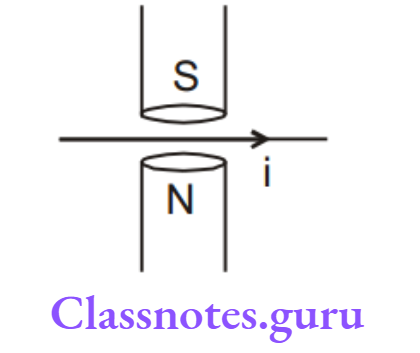
- 4 × 10–2 N
- 16 × 10–2 N
- 32 × 10–2 N
- 8 × 10–2 N
Answer: 4. 8 × 10–2 N
Question 17. A wire of length l carries a current i along the y-axis. A magnetic field exists which is given as
\(\vec{B}=B_0(\hat{i}+\hat{j}+\hat{k}) T .\) Find the magnitude of the magnetic force acting on the wire.
- \(\sqrt{2} \mathrm{~B}_0 \mathrm{i} \ell\)
- \(2 \sqrt{2} \mathrm{~B}_0 \mathrm{i} \ell\)
- \(3 \sqrt{2} \mathrm{~B}_0 \mathrm{i} \ell\)
- \(4 \sqrt{2} \mathrm{~B}_0 \mathrm{i} \ell\)
Answer: 1. \(\sqrt{2} \mathrm{~B}_0 \mathrm{i} \ell\)
Question 18. A straight, long wire carries a current of 20 A. Another wire carrying an equal current is placed parallel to it. If the force acting on the unit length of the second wire is 2.0 × 10–4 N, what is the separation between them?
- 20cm
- 40cm
- 60cm
- 80cm
Answer: 2. 40cm
Question 19. A circular coil of 100 turns has an effective radius of 0.05 m and carries a current of 0.1 amp. How much work is required to turn it in an external magnetic field of 1.5 wb/m2 through 1800 about an axis perpendicular to the magnetic field? The plane of the coil is initially perpendicular to the magnetic field.
- \(\pm 50 \pi \times 10^{-3} \mathrm{~J}\)
- \(\pm 75 \pi \times 10^{-3} \mathrm{~J}\)
- \(\pm 45 \pi \times 10^{-3} \mathrm{~J}\)
- \(\pm 35 \pi \times 10^{-3} \mathrm{~J}\)
Answer: 2. \(\pm 75 \pi \times 10^{-3} \mathrm{~J}\)
Question 20. A rectangular coil of 100 turns has a length of 4 cm and a width of 5 cm. It is placed with its plane parallel to a uniform magnetic field and a current of 2A is sent through the coil. Find the magnitude of the magnetic field B, if the torque acting on the coil is 0.2 N-m.
- \(\frac{1}{2} \mathrm{~T}\)
- \(\frac{1}{4} \mathrm{~T}\)
- \(\frac{1}{8} T\)
- \(\frac{1}{3} T\)
Answer: 1. \(\frac{1}{2} \mathrm{~T}\)
Question 21. A point charge is moving in a circle with constant speed. Consider the magnetic field produced by the charge at a fixed point P (not the center of the circle) on the axis of the circle.
- It is constant in magnitude only
- It is constant in direction only
- It is constant in direction and magnitude both
- It is not constant in magnitude and direction both.
Answer: It is constant in magnitude only
Question 22. A current-carrying wire is placed in the grooves of an insulating semi-circular disc of radius ‘R’, as shown. The current enters at point A and leaves from point B. Determine the magnetic field at the point

- \(\frac{\mu_0 I}{8 \pi R \sqrt{3}}\)
- \(\frac{\mu_0 I}{4 \pi R \sqrt{3}}\)
- \(\frac{\sqrt{3} \mu_0 I}{4 \pi R}\)
- No of these
Answer: 2. \(\frac{\mu_0 I}{4 \pi R \sqrt{3}}\)
Question 23. The Axis of a solid cylinder of infinite length and radius R lies along the y-axis it carries a uniformly R R, y, distributed current ‘ i ’ along the +y direction. Magnetic field at a point
- \(\left(\frac{R}{2}, y, \frac{R}{2}\right)\)
- \(\frac{\mu_0 i}{2 \pi R}(\hat{j}-\hat{k})\)
- \(\frac{\mu_0 i}{4 \pi R} \hat{j}\)
- \(\frac{\mu_0 \mathrm{i}}{4 \pi R}(\hat{\mathbf{i}}+\hat{\mathrm{k}})\)
Answer: 1. \(\left(\frac{R}{2}, y, \frac{R}{2}\right)\)
Question 24. A long, straight wire carries a current along the Z-axis. One can not find two points in the X-Y plane such that
- The magnetic fields are equal in magnitude and same in direction
- The directions of the magnetic fields are the same
- The magnitudes of the magnetic fields are equal
- The field at one point is opposite to that at the other point.
Answer: 1. The magnetic fields are equal in magnitude and same in direction
Question 25. A uniform magnetic field \(\vec{B}=(3 \hat{i}+4 \hat{j}+\hat{k})\) exists in region of space. A semicircular wire of radius 1 m carrying current 1 A having its center at (2, 2, 0) is placed in an x-y plane as shown in Fig. The force on the semicircular wire will be

- \(\sqrt{2}(\hat{i}+\hat{j}+\hat{k})\)
- \(\sqrt{2}(\hat{i}-\hat{j}+\hat{k})\)
- \(\sqrt{2}(\hat{i}+\hat{j}-\hat{k})\)
- \(\sqrt{2}(-\hat{\mathrm{i}}+\hat{\mathrm{j}}+\hat{\mathrm{k}})\)
Answer: 2. \(\sqrt{2}(\hat{i}-\hat{j}+\hat{k})\)
Question 26. A proton of mass 1.67 × 10–27 kg and charge 1.6 × 10–19 C is projected with a speed of 2 × 106 m/s at an angle of 60° to the x-axis. If a uniform magnetic field of 0.104 T is applied along the y-axis, the path of the proton is:
- A circle of radius 0.2 m and period π× 10–7 s
- A circle of radius 0.1 m and period 2π × 10–7 s
- A helix of radius 0.1 m and period 2π × 10–7 s
- A helix of radius 0.2 m and period 4π × 10–7 s
Answer: 3. A circle of radius 0.1 m and period 2π × 10–7 s
Question 27. An electron traveling with a speed u along the positive x-axis enters into a region of magnetic field where B = –B 0 ˆk (x > 0). It comes out of the region with speed v then

- v = u at y > 0
- v = u at y < 0
- v > u at y > 0
- v > u at y < 0
Answer: 2. v = u at y < 0
NEET Physics Class 12 Chapter 1 Magnetic Field Multiple Choice Questions
Question 28. Which of the following statements is correct in the given figure?

- Net Force On The Loop Is Non-Zero
- Net Torque On The Loop Is Zero
- Loop Will Rotate Clockwise About Axis Oo’ When Seen From O
- Loop Will Rotate Anticlockwise About Oo’ When Seen From O
Answer: 3. Loop Will Rotate Clockwise About Axis Oo’ When Seen From O
Question 29. A magnetic field \(\vec{B}=B_0 \hat{j}\) exists in the region \(\mathrm{a}<\mathrm{x}<2 \mathrm{a} \text { and } \overrightarrow{\mathrm{B}}=-\mathrm{B}_0 \hat{\mathrm{j}}\) and , in the region 2a < x < 3a, where B V v i= 0ˆ 0 is a positive constant. A positive point charge moving with a velocity, \(\vec{V}=v_0 \hat{i},\) where v0 is a positive constant, enters the magnetic field at x = a. The trajectory of the charge in this region can be like this.

Answer: 1.
Question 30. A particle of mass M and positive charge Q, moving with a constant velocity \(\overrightarrow{\mathrm{u}}_1=4 \hat{\mathrm{i}} \mathrm{ms}^{-1} \text {, }\) enters a
region of uniform static magnetic field normal to the x-y plane. The region of the magnetic field extends
from x = 0 to x = L for all values of y. After passing through this region, the particle emerges on the
other side after 10 milliseconds with a velocity \(\overrightarrow{\mathrm{u}}_2=2(\sqrt{3} \hat{\mathrm{i}}+\hat{\mathrm{j}}) \mathrm{ms}^{-1}\) The correct statement(s) is (are):
- The direction of the magnetic field is the –x direction.
- The direction of the magnetic field is +z direction
- The magnitude of the magnetic field \(\frac{50 \pi M}{3 Q}\) units
- The magnitude of the magnetic field is \(\frac{100 \pi M}{3 Q}\) units.
Answer: 3. The magnitude of the magnetic field \(\frac{50 \pi M}{3 Q}\) units
Question 31. A conductor (shown in the figure) carrying constant current I is kept in the x-y plane in a uniform B magnetic field. IF F is the magnitude of the total magnetic force acting on the conductor, then the incorrect statement is:

- \(\text { If } \vec{B} \text { is along } \hat{z}, F \propto(L+R)\)
- \(\text { If } \vec{B} \text { is along } \hat{x}, F=0\)
- \(\text { If } \vec{B} \text { is along } \hat{y}, F \propto(L+R)\)
- \(\text { If } \vec{B} \text { is along } \hat{z}, F=\)
Answer: 4. \(\text { If } \vec{B} \text { is along } \hat{z}, F=\)












